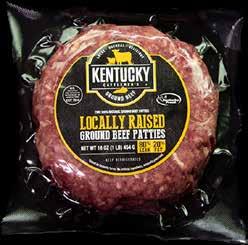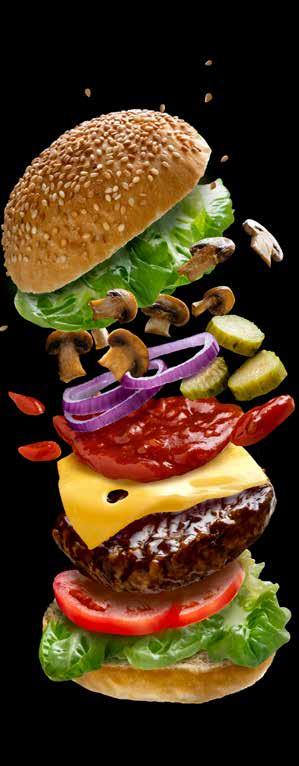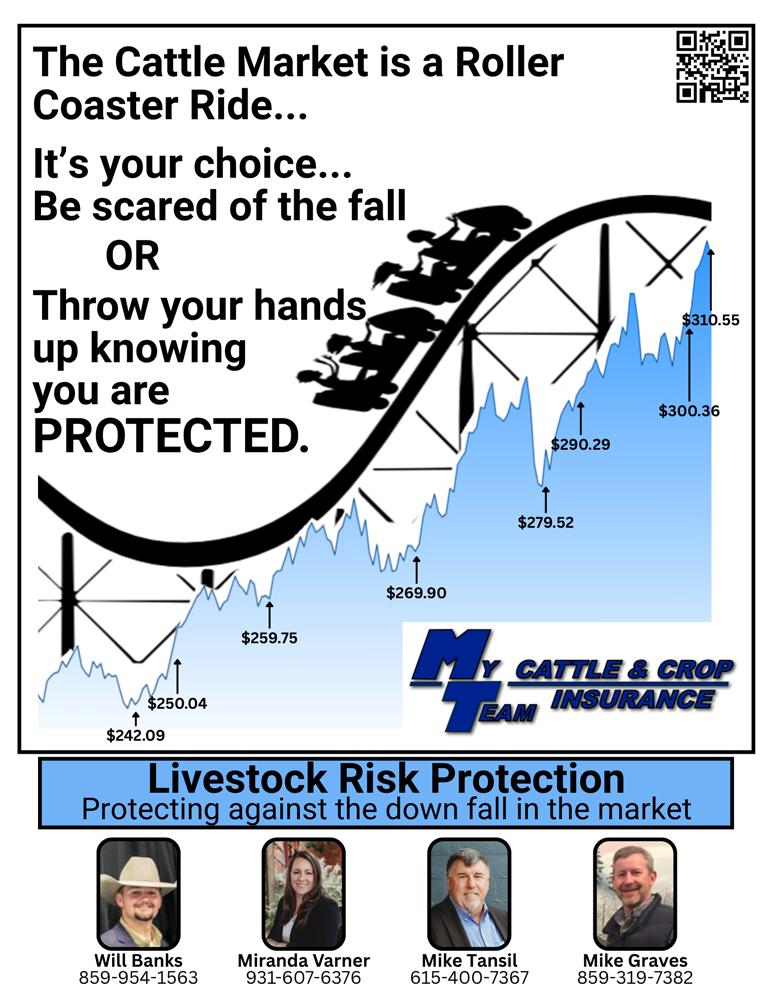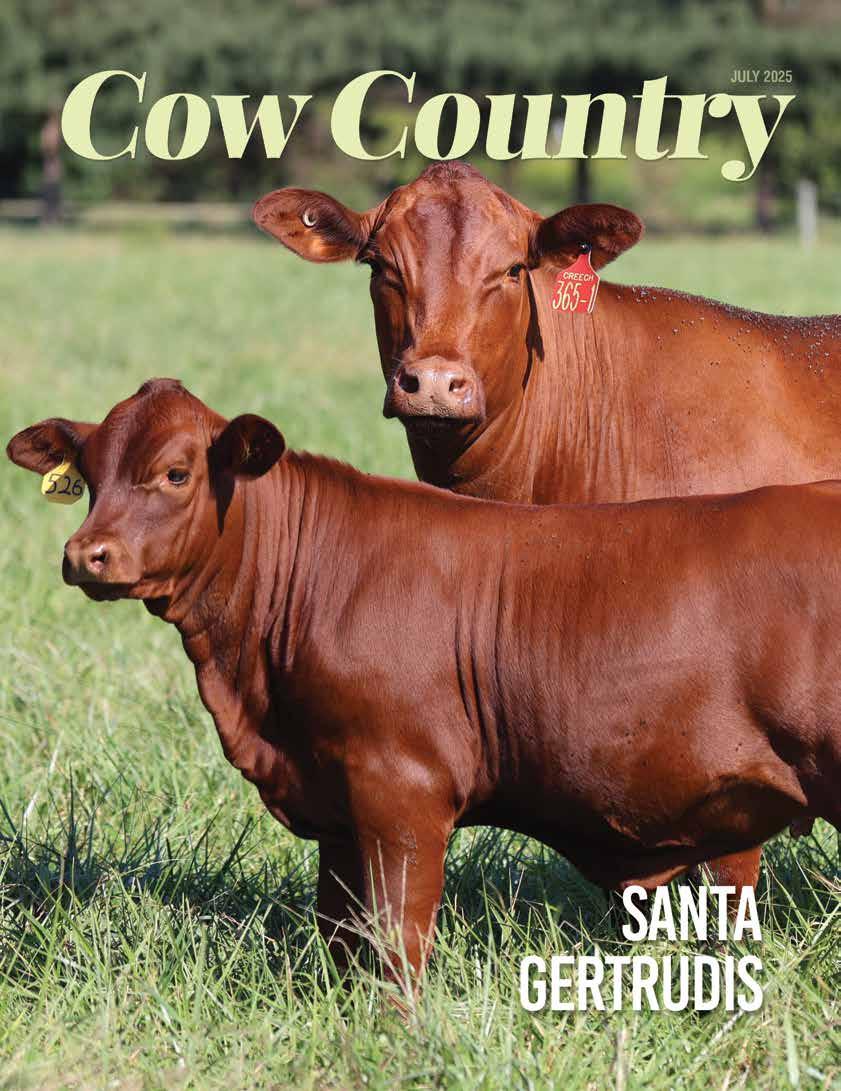







Knight Feedlot Manager










Knight Feedlot Manager

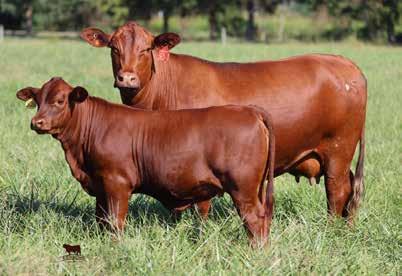
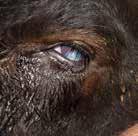
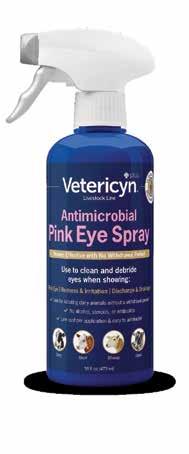
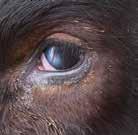

As I pulled into my driveway this evening, my 2014 F150 had just south of 213,000 miles on it. I bought it new off the lot with an “on the road” price of an even $40,000. In the nearly decade I have had it, it has been highly reliable. I have probably spent around $10,000 on tires and routine maintenance without significant repairs. Simple arithmetic tells me that driving that truck costs around $0.23 per mile. A quick Google search tells me that the same truck new today is about $60,000. The same Google search tells me that the truck in a used version with less than 10,000 miles on it looks to be about $50,000. If you are someone who is driving a new truck every single year, it costs you roughly four times per mile what it is for me to drive a truck that might need the upholstery cleaned but has shown no issues getting me from point A to point B. I am of the school of thought that you want to buy a vehicle with a lot of life left on it and drive it until it is suitable for nothing besides scrap metal. The more miles I can get out of a vehicle, the less per mile it will cost me to use it.
The same concept can be applied when evaluating heifer retention and cow cost decisions. How much more valuable is a cow that leaves your herd at ten years old compared to two? I can assure you the average cost per calf is much less the more calves you can get from a cow. If you are replacing a large percentage of your heifers each year, it costs you a lot more than it should be. Your cows may be what they call in the auto industry a “lemon.” The job of a vehicle is to get me from point A to point B with as few headaches as possible. To me, the job of a cow is to give me a marketable calf each year with as few headaches as possible. I don’t care what model year she is. The longer either of them stays around, the better off I can be. Much like there will come a day when my truck no longer serves its assigned purpose, there will come a day when a cow has lived her life and is no longer a contributing member of the herd. The longer we go between purchase and disposal of either, the better off we will be financially.

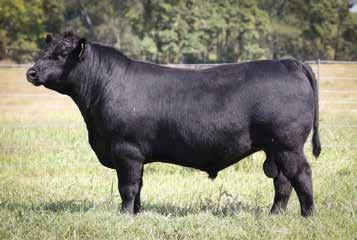
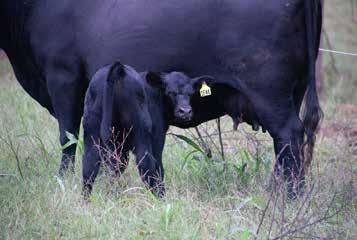
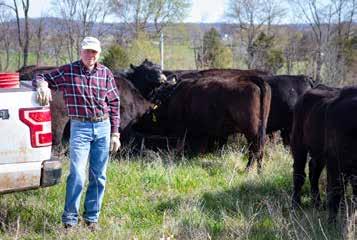
OFFICERS:
President
RANDY WARNER Sharpsburg
President Elect
ALLAN BRYANT Eminence
Vice President
DANIEL HAYDEN Whitesville
Treasurer
KEN ADAMS Upton
Past President
JEFF PETTIT Sebree
KCA Program Chairman
ADAM CHUNGLO Harrodsburg
KBC Chairman
RYAN MILLER Campbellsville
KBN Chairman*
ALLAN BRYANT
Beef Solutions Chairman*
DANIEL HAYDEN *ex officio
REGION 1
Wayne Zoglmann, John Mark Brown, Dale Gold, Greg Roberson, Gary Woodall, Coleman Ladd, Susan Zoglmann, Bill Plemmons, Kenton Howard, Steve Dunning, Conner Williams
REGION 2
Phyllis Gentry, Joe Lowe, Allison Nissley, Rayetta Boone, Robbie Hatfield, Chris Imbruglio, Maggie Webb, Andy Joe Moore, Adam Thomas, AJ Mitchell, Isaac Thompson, Kenneth Green, Trent Jones, Josh Morris, Joe Mike Moore, Amy Cecil
REGION 3
Amanda Hall, Nathan Lawson, Allen Phillips, Irvin Kupper, John David Yount, Lincoln Clifford, Abbey Biddle, Ben Tinsley, Crystal Harrod, Kyle Bush, Michelle Simon, Craig Retzlaff
REGION 4
Amy White, Brad Reynolds, Chad Anglin, Phillip Stamm, Danielle Harmon, Brandy Graves, Jodi Purvis, Mike Ravencraft, Ronnie Lowe, Logan Carter, Jason Crowe, Rob Amburgey
REGION 5
Phillip Reese, John Settles, Natalie Wesley, Doris Hamilton, Freddy Harris, Brent Williams, Anne Bays, Tommy Glasscock, Josh Wethington, Arch Sebastian, Terry Mattingly
Executive Committee members in bold
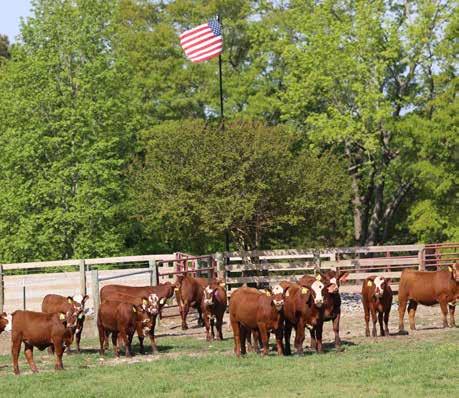
HelIo, I would like to introduce myself, Ivye Mattingly, president of the Kentucky Santa Gertrudis Association along with our current board members: Pat Heath-vice president, Beverly Heath-secretary and treasurer, Cody Mattingly-sales chairman and Roger Mattingly, Rodney Smith, David Smith and Chip Parker as board of directors.
Currently, we are preparing for our 2025 sale July 18-19 at the United Producers Stockyards in Bowling Green. Junior show will follow the sale. All junior members are encouraged to participate in this event. Some of the activities planned are meal, show, junior games and photo contest.
A meeting is being planned for late fall to plan for the 2026 season and elect new board members. Hope to see everyone there!
Kenny
Kelly Baird KBC Director of Communications
Todd Brown Graphic Designer
Bradon Burks KBC Director of Education
Rachel Cain Membership and Communications Coordinator
Amelia Carter KBC Director of Industry Relations
Danny Coy Video Production Specialist
Jake Harrod KBN Program Coordinator
Dan Miller KBN Industry Coordinator
Debby Nichols National Advertising Sales, LAN
Katie Pratt Communications Manager
Alex Scott MS, RD, LD KBC Southeast Regional Director of Nutrition
Becky Thompson Director of Kentucky Beef Network
Kelly Tucker KCA Collections & Compliance
Nikki Whitaker Director of Operations & Policy

Randy Warner KCA President
I hope this month finds you healthy and well. As I start out this month’s column, I am fixing to leave for the NCBA Summer Business Meeting in San Diego, California. I’m super excited to participate in these meetings that will guide us into next year. I will keep you posted on the happenings at these meetings in the future President’s Thoughts.
Hay season on the farm is in full swing now, and it looks to be a bountiful harvest this year. There is still nothing like going into a freshly mowed hayfield and smelling the air. It’s still one of the most pleasant things about hay season and will stick with me forever. If you’ve been there, you know what I’m talking about.
We have been extremely busy at home trying to put up hay around my travel schedule and as the weather allows. I don’t know what I would do if it wasn’t for my family. Noah and Audra, my nephew and his wife, are the “crew that gets it done.” They kind of push you out of the way so they can do it themselves. I don’t argue much
because I’m getting older and they’re there and I’m away so I just go along. You know it’s never easy to loosen the reins and let someone else take over, but it’s going to happen to everyone so just get prepared. Tammy calms me down and tells me I’ve taught them everything they need to know and they can accomplish the tasks at hand without me looking over their shoulder, but it’s never going to be easy. One reason is because I have my seats set a certain way, and that’s the first thing he changes once he gets in my tractor. Don’t you just hate that? Get a tractor seat set just for you and someone gets in and let’s all the air out. So, when you’re in a hurry and jump back in it, you about bite your tongue off. Yeah, me too because it’s happened before.
Well, I need to get off my soapbox and count my blessings that I have someone willing and able to help me out with all the chores. I know plenty of people who have no one to help out in these types of situations, and I’m blessed to have someone.
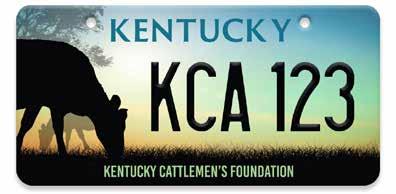
As for happenings around the office, we met with the architects and went over preliminary drawings of the Livestock Innovation Center, and I must say I’m very impressed with what they’ve been able to come up with. I believe everyone will be very impressed if our center looks anything like what they’ve have conceptualized. It’s a combination of a lot of different ideas that they’ve put on paper and will blend in great with the countryside.
As for other things that are happening in the office, we’ve got 30 days to finish getting our membership numbers for the year. We have already passed 2024 membership totals and hope that this year is a record-breaking year for us. Hopefully, everyone will renew or join before the end of this month, and I do really appreciate it.
Summer started last week, and I hope we get timely rains with not a lot of the unbearable heat that we have had in past years. As of right now, everything is still a lush green, and I hope it stays that way. The cattle look great this time of the year, and I’m hopeful for a banner market come this fall for everyone.
One thing being president has taught me is you have to be able to juggle multiple things at once because they’re many things you need to take care of for the good of the association. I try my best to see that it is done to best of my abilities. I have also made many new friends that I would never have had the chance to without the help of many people, and for that, I’m extremely grateful.
In closing, I want to thank you for being a member of the second largest cattlemen’s association in the country and for allowing me to lead this organization this year. It is a job I take very seriously, and as always, I’m at your service for anything you might need. God bless and thank you.
Kentucky Cattlemen's Foundation will receive $10 from each purchase and renewal to benefit education, leadership and youth programs.


Jonathan Shell Agriculture Commissioner
As the warm days of summer stretch across the Bluegrass State, one of Kentucky’s most cherished traditions is taking place: the county fair.
Kentucky’s 74 county fairs are more than just events; they are the heartbeat of our rural communities. The fairs are a celebration of local pride, agricultural heritage and community connection. Whether it’s showing a market steer, entering a homegrown tomato in a horticulture contest or baking a blue-ribbon pie, these fairs offer something for everyone.
For cattle producers across the commonwealth, county fairs offer a powerful platform to showcase their animals, invest in the next generation and remind the public of the vital role livestock plays in Kentucky’s economy and way of life.
Cattle shows are the centerpiece of many county fairs, drawing spectators and participants from neighboring counties and beyond. Whether it’s Angus, Hereford, Charolais or commercial crossbreds, the show ring puts Kentucky cattle genetics front and center. These events give producers a chance to exhibit the quality of their herd, compare breeding programs and network with others in the industry.
For many young people, especially those involved in 4-H and FFA, the county fair is the culmination of months of feeding, grooming, halter-breaking and recordkeeping. But it’s more than just raising a market steer or heifer; it’s learning discipline, responsibility and respect for the livestock industry. Every exhibitor walking into the
ring with a lead rope in hand is gaining valuable life skills and laying the groundwork for a future in agriculture.
The fairs also serve as a first step in the show circuit for young cattlemen and women. County fairs often lead to the Kentucky State Fair in August and, for some, the North American International Livestock Exposition in November. Many of today’s leading cattle producers first cut their teeth in the county show ring.
The economic impact of county fairs should not be underestimated either. These events generate valuable revenue for rural economies, supporting local vendors, food trucks, craftsmen and entertainers. Our fairs help spotlight Kentucky-grown goods and Kentucky-bred livestock, creating marketing opportunities and strengthening the state’s ag economy.
But perhaps the greatest value of our county fairs is how they foster a sense of belonging. In an age when rural voices can feel overlooked, county fairs give rural Kentuckians a place to be seen and celebrated. They are places where local culture thrives, where neighbors reconnect and where the traditions of farming, craftsmanship and community service are passed down like heirlooms.
So, this summer, make time to attend your local fair. Cheer on the kids in the show ring. Buy a corndog or cotton candy from a local vendor.
Kentucky’s county fairs are more than summer fun; they are symbols of resilience, tradition and the enduring spirit of rural life.
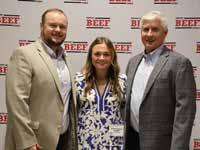
Briley New is currently serving as the summer intern for the Kentucky Beef Council and the Kentucky Cattlemen's Association. A native of Somerset, New is a 2023 graduate of Pulaski County High School and a rising senior at Western Kentucky University, where she is majoring in agriculture with a concentration in animal science. Her passion for agriculture was cultivated at a young age on her family’s beef cattle operation in eastern Pulaski County. An active member of FFA throughout high school, she has continued her involvement in agriculturerelated organizations in college. New is a member of Collegiate Farm Bureau, the WKU Pre-Vet Club, and serves as an agriculture ambassador for the WKU Department of Agriculture. She also is president of the WKU Meat Science Club. New is deeply passionate about the agriculture industry and is dedicated to sharing her love for it with others. She is excited to continue promoting the beef industry throughout her internship this summer.
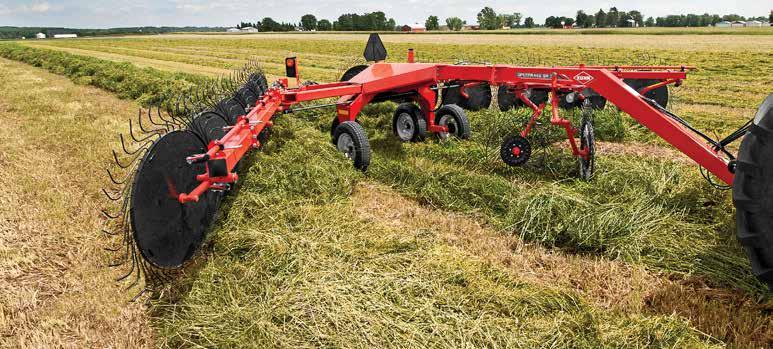






Dave Maples Executive Vice President
This month has been a good month for my family and our small cattle herd. Like many of you, we farm after 5 p.m. during the week and on Saturdays and Sunday afternoons. We sold 10 commercial heifers in a bred heifer sale where they averaged $3,850. Two of the heifers sold for $4,200. Our steers sold the following week in a graded feeder calf sale. We had a 799-pound steer bring over $2,500 dollars. These are nice prices, and I am sure you are enjoying seeing your check when you sell cattle.
History tells us that we will progress through the cattle cycle, so enjoy these prices while you can. Our family is using it as a time to get our financial position in a better place by paying down our farm loan and upgrading
our facilities. We have culled really hard, so our cow herd is younger. This also gives our pastures a little break. We participated in the Kentucky Beef Network-University of Kentucky Post Weaning Value-Added Program (PVAP). We worked with Kevin Laurent at UK and Jacob Settles with KBN on the program, and I am really glad we did it. Jacob came to the farm and got individual weaning weights on all our calves. Then we kept daily records of all of our expenses including feed, hay, mineral and any other costs. This was a good exercise because my wife questions my decisions quite often.
Weaning our calves was very good for us financially, and it is best for the calves in the long run. Over the
76 days between weaning and the day we sold the calves they gained 2.62 pounds per day. The steers gained 2.96 pounds per day. That resulted in a $9,676.61 advantage for keeping the calves for 76 days. Also, by selling in a comingled sale with a group of our neighbors, our calves average $14.43 per pound over the conventional sale method.
Just following best management practices most often pays off with a better experience. It sets the calves up for a better experience for their next owner, and in the end, it becomes a better experience for the consumer.
Beef demand has been one of the real positive spots of agriculture. Even with higher cattle prices, the consumer has continued to purchase our product. That says a great deal to you, our beef producers. You have done a good job with producing a quality calf that the consumer
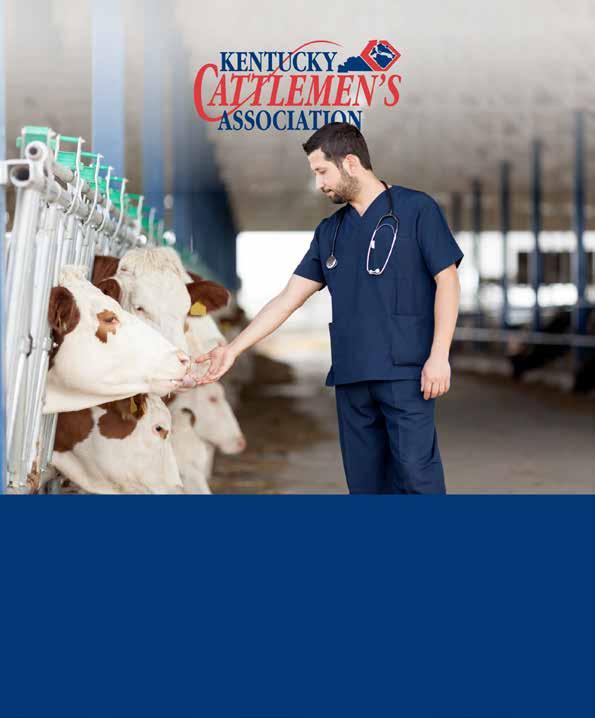
As I write this column, the Kentucky FFA Convention and 4-H Teen Conference are occuring in Lexington. I always enjoy going to the FFA convention and doing the Beef Advocate signing event with Bradon Burks with the Kentucky Beef Council. It is a pleasure to get to talk with and learn more about this next generation of agriculture enthusiasts. Over the years, I have gotten to know different individuals and have watched their progress throughout their careers. It is a real pleasure to just to get to be a small part in these young folks’ lives.
Again, I think you need to take your hats off and pat yourself on the back for all the support you have given to our future cattlemen either to an individual, at the county level or by supporting the Kentucky Junior Cattlemen’s Association, FFA, 4-H and any other statewide meeting of young ag enthusiasts. Thank you.
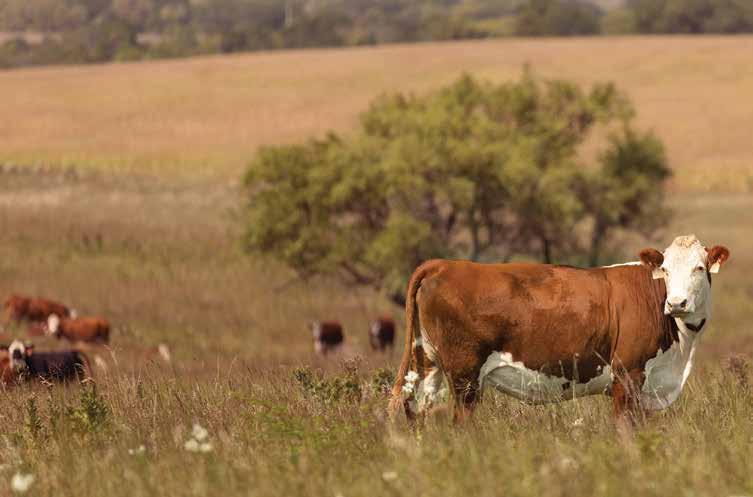



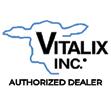














submitted by Ken Wininger
The Barren County Cattlemen’s Association cooked 350 steaks for Glasgow school teachers on a rainy May day as part of a teacher appreciation event they sponsored. The teachers also enjoyed sides of coleslaw and baked beans. Cooking Crew members included Jim Duffey, Frank Rowland, Don Wilson, Mark Crane, Robert Siddens, Michael Hale and Ken Wininger.
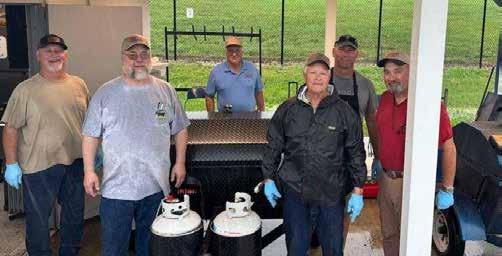
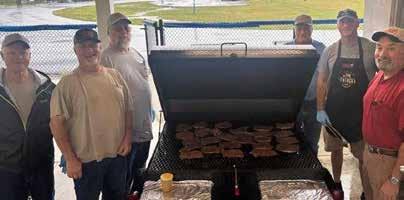
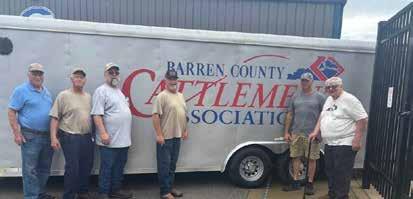
submitted by Barry Welty
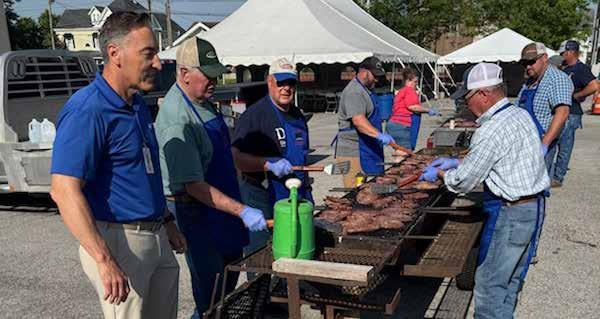
of
Ø Bull calves out of HCR Answer 2042 and HCR SPIRIT 4007.
Bred for calving ease and growth.
Ø Bulls for both purebred and commercial breeders.
Ø Bred for calving ease and growth.
Ø Yearlings and two-year-olds available.
Ø Bulls for both purebred and commercial breeders.
Ephraim McDowell Regional Hospital celebrated National Healthcare Week on May 15 by providing a steak meal for their 1,800 employees. Boyle County cattlemen cooked at the hospital’s Danville location. Mercer County cattlemen cooked at their Harrodsburg location, and Lincoln County cattlemen cooked at the hospital’s Stanford location. What a great way to celebrate National Beef Month. Pictured are the Boyle County cattlemen cooks along with Mark Fluty, Ephraim McDowell events and food service manager, as they prepared 720 steaks for lunch.
Ø Bred heifers to calve in fall available.
Ø Yearlings and two-year-olds available.
Ø Bred heifers to calve in fall available. John Allison, Owner 545
submitted by Traci Johnson
Madi Harrison earned the 2025 Todd County Cattlemen’s $500 scholarship. Madi manages a small cattle herd with her grandfather and produces hay and firewood. She has been active in both FFA and 4-H, served as FFA reporter, and will serve as Kentucky FFA Foundation ambassador. She is the 2025 state champion for FFA Forest Management and Products Proficiency. Madi will attend Murray State University this fall and pursue degrees in nursing and agriculture. Pictured with Madi (left to right) are Todd County Cattlemen’s Association Treasurer Tony Berry, Vice President Jack Paine and President Don Laster.
submitted by Whitney Peck
The Warren County Cattlemen’s Association hosted a Beef Cookoff May 1 at the Warren County Extension office. Teams had to be comprised of at least one cattlemen’s member. Don and Katina Cole’s “Monster Burger” received first place and was voted Most Creative. Gil and Mary Cowles received second place for their entry. “The Co-op” burger submitted by Farm Credit MidAmerica won Best Appearance.
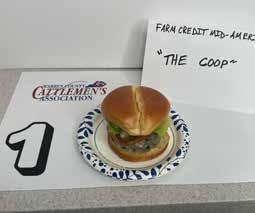
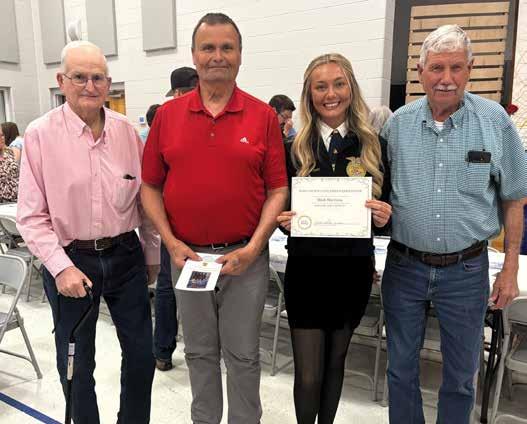
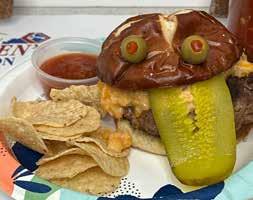
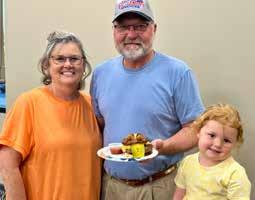
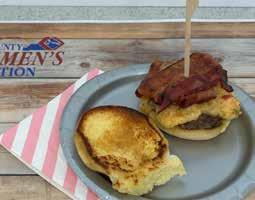
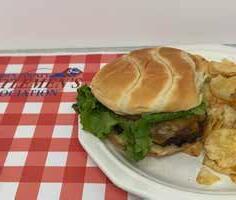
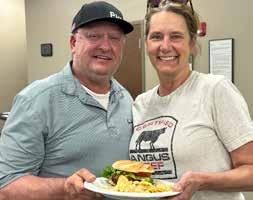

submitted by John Walpole
The Logan County Cattlemen’s Association hosted their Annual Steer Show, Sale and Carcass Contest May 27. The event featured 36 exhibitors who represented 22 families and showed 47 steers. The steers sold for an average of $4.25/ lb. Red Barn & Associates sponsored the meal for 235 attendees. Some of the youth participants watched a USDA grader grade the carcasses. Also pictured with the steer show winners are the Logan County Cattlemen’s scholarship winners: Lilly Robey, high school recipient, and Abbi Walpole, college recipient. Both Robey and Walpole are majoring in agriculture.
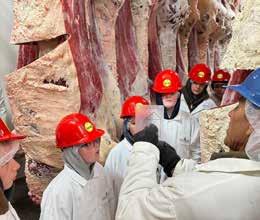
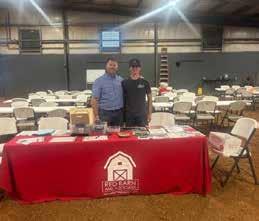
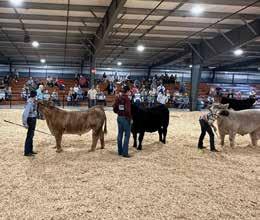
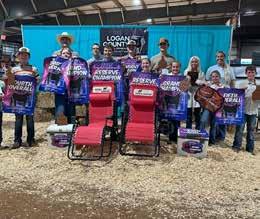
submitted by Nathan Howard
The McLean County Cattlemen’s Association was happy to award $500 scholarships to McLean County High School Seniors Danielle Reynolds (L) and Trinity Holmes (R).
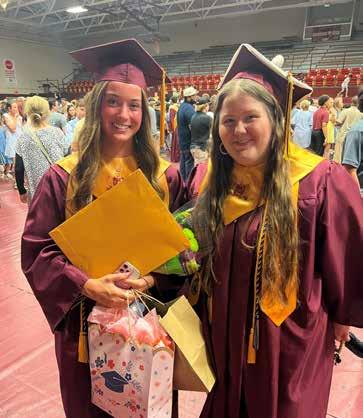
Our lab provides fecal worm egg counts. This data allows you to:
• evaluate dewormer effectiveness
• evaluate pasture contamination
IF YOU PROVIDE FRESH MANURE, WE PROVIDE USEFUL INSIGHTS.
GIL MYERS, PhD
2897 Mount Sherman Road Magnolia, Kentucky 42757
270-537-4749
gmyersph@scrtc.com
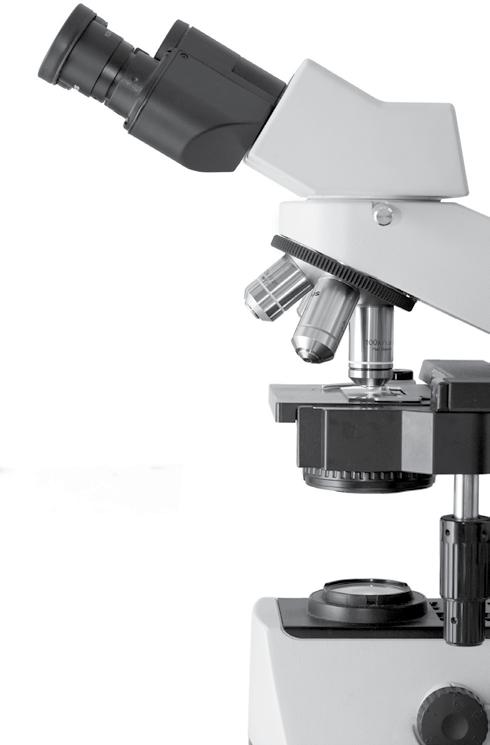

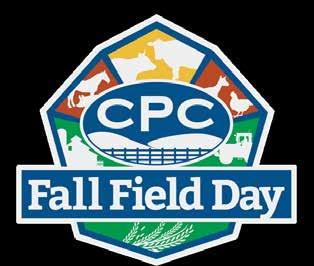
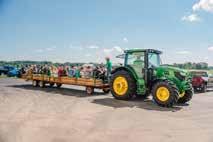
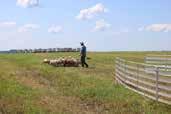
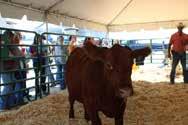
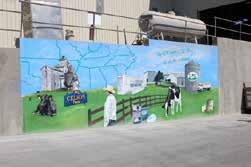
Katie Pratt Kentucky Cattlemen's Association
GLASGOW, KY− Kentucky cattle producers received the latest production and management information and had hands-on opportunities to brush up on their cattle handling skills during the Beef Quality and Care Assurance chuteside training held at the Farmers Regional Livestock Market of Glasgow.
“I always pick up something new that will help my operation out, and over the years, I have picked up a lot of information,” said Ken Wininger, a Barren County cattle producer with a commercial cow-calf herd of around 80 mamas. He also feeds out steers.
The BQCA program has been around for many years as a way to educate producers on safe cattle handling and management techniques. These techniques help them safely and humanely raise healthy cattle and produce a quality product. In Kentucky, the certification is often an important qualifier for producers pursuing County Agricultural Investment Program Funds. BQCA certification lasts for three years.
“It’s kind of like reading a book for the second time. Every time you attend a BQCA training, you pick something new up,” said Les Anderson, University of Kentucky beef extension specialist. Anderson’s
presentation at the chute-side training focused on blood pregnancy tests.
In Kentucky, the educational training is managed by the Kentucky Beef Network and UK Beef Extension. They have offered free, chuteside trainings in conjunction with free BQCA months in April and September for a number of years.
The location of each training moves to reach more of the state’s producers. The recent chute-side training was held at Farmers Regional Livestock Market of Glasgow for the first time. Brad Towe owns the stockyards with his brother, Ryne. Towe has his BQCA certification, and he encourages the producers who sell at the market to have theirs.
“We want to make people aware that the better livestock they bring to the market, the more money they are going to get for them,” Brad Towe said. “The work they do on the farm with cattle handling, weaning and vaccinating really shows up when they bring their animals here in their disposition, and the animals also tend to have lower stress levels.”
The KBN and UK team work to make each training a unique experience for attendees.
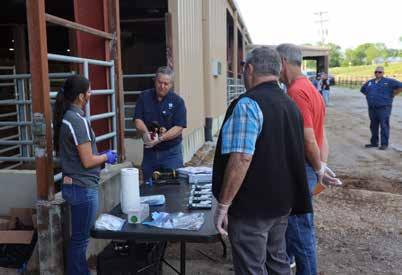
“We try to change the material for each of these trainings while keeping the topics relevant and at the same time, provide hands-on opportunities so producers gain the confidence they need to adapt some of these management practices at home,” said Katie VanValin, UK beef extension specialist who spoke on ways to feed distillery byproducts at the Glasgow chute-side training.
The Kentucky Beef Network and UK offer BQCA training in a variety of ways including online, in a classroom setting and through these handson opportunities. Wininger said he always attends an in-person training each time his BQCA card is up for renewal.
Metcalfe County cattle producer Tom Hughes says he usually attends the classroom trainings when its time to renew his certification but chose to attend the chute-side training this time because of the topics being covered.
“This training gave me the chance to see some new things and seemed like it would be more enjoyable than just sitting in a classroom,” said Hughes, who raises a commercial herd of around 120 mama cows, backgrounds heifers during the winter and raises purebred Herefords.
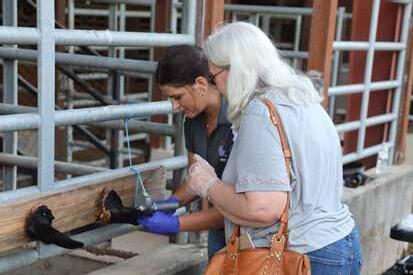
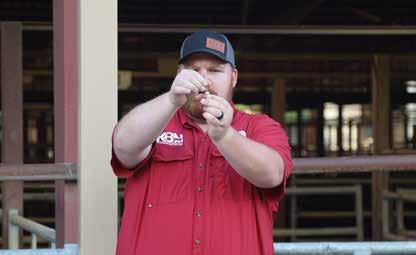
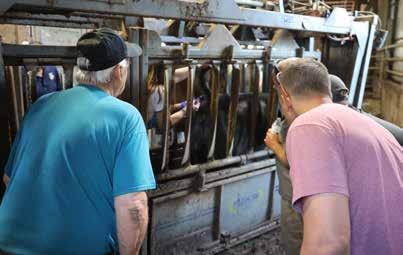
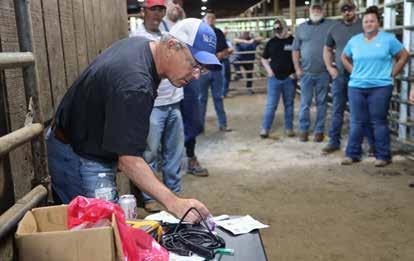
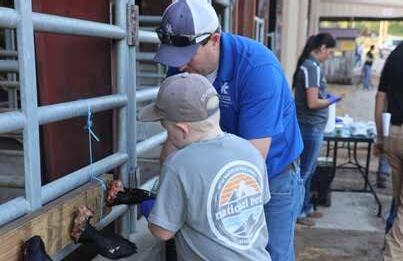
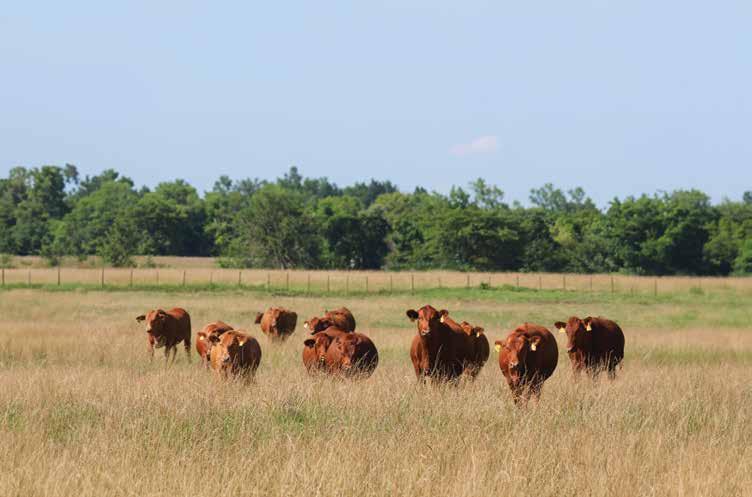

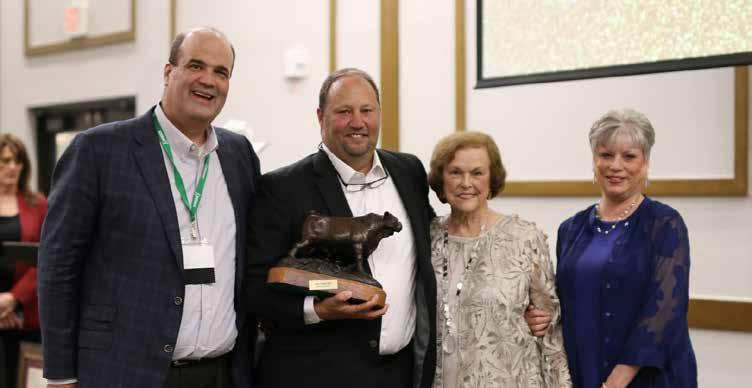
Deanna Parker, Parker Farms of Cave City, was inducted into the Santa Gertrudis Breeders International Hall of Fame at this year’s annual meeting held May 1-4 at New Braunfels, Texas. Parker was inducted for her dedication, leadership and service to Santa Gertrudis Breeders International and to the Santa Gertrudis breed. This award was presented to her by Past President, Yancey Strait. She accepted this award along with her two adult children, Chip Parker and Carin Jeffers.
Parker and her family have been breeders of Santa Gertrudis cattle and members of Santa Gertrudis Breeders

International since 1991. She has served on the national board of directors representing District VI from 2000-2006 and as an Eastern Region director from 2007-2019, nine of those years as secretary-treasurer and chairman of the Finance Committee. She also served on the Nominating Committee, Shows and Exhibits and other special committees. Parker received the President’s Award in 2006 and in 2022, under two separate presidents.
-Log Cabin Siding Wood & Vinyl
-1x6 & 1x8 T&G Knotty Pine
-2x6 T&G SYP & Treated
-6” & 8” Cedar Bevel Siding
-Framing & Treated Lumber
OUR


-Rebar & Concrete Wire -Fence Post & Fence boards -Wood Barn Siding -Used Guardrail
-20’ & 40’ Used Cargo Containers
She has also been very active with the Kentucky Santa Gertrudis Association, having served on its board of directors, Kentucky National Show and Sale Committee and other events sponsored by the local affiliate. Parker, her husband, Charles, and her son, Chip, own and manage a purebred, Star Five and commercial cattle operation at their farms in south central Kentucky.


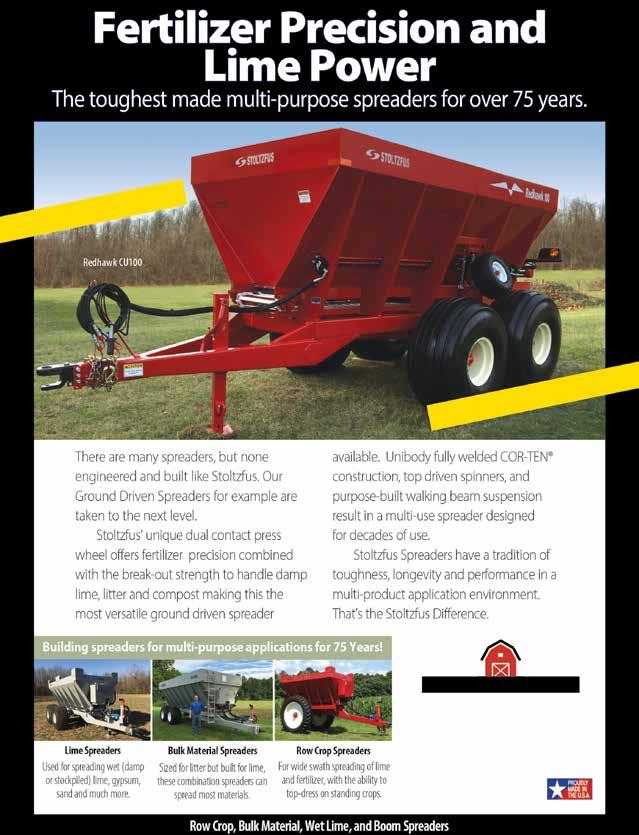

Kenny Burdine University of Kentucky
Changes in beef cow inventory are driven by two factors – how many new bred heifers enter the herd each year and how many cows exit the herd through culling and death loss. As is always the case when calf prices are high, a lot of discussion has been focused on heifer retention thus far in 2025. Heifers as a percentage of onfeed inventory has been decreasing, but not at a rate that suggests widespread retention. I would expect heifer retention to increase for the rest of 2025 if calf prices stay high and weather cooperates. However, it is important to remember that there is a time lag between heifer retention and the associated impact on the size of the cow herd. A heifer calf born in the spring 2025 would likely not have her first calf until spring 2027 and would not wean that first calf until that fall. The point here being that heifer retention in the second half of 2025 most likely impacts the size of
the cow herd in 2027, not 2026. While there is some delay between heifer retention and cow herd expansion, the impact of cow culling patterns is seen much faster. This is an important point right now because cow slaughter was down by more than 17% through mid-May. If that trend continues through the rest of the year, beef cow slaughter would be at the lowest levels seen since 2015. Despite very strong cull cow prices, cattle producers appear to be keeping cows a bit longer in hopes of getting another high-value calf.
For additional perspective, I like to consider beef cow slaughter as a percentage of Jan. 1, beef cow inventory. This is tracked in the figure below from 1986 to 2024 and estimates the percentage of the beef cowherd that was culled each year. During this time, the beef cow slaughter rate averaged just under
10%, but ranged from 7.6% in 2015 to 13.2% in 2022. The high cull rates from 2021 to 2023 also partially explain the lower rates today as the cow herd likely got younger during that time.
If the current pace continued for the remainder of 2025, beef cow slaughter would come in at about 8.5% of Jan. 1 beef cow inventory. Holding everything else constant, this is a number that would tend to suggest the cow herd would grow. This will be somewhat offset by limited heifer inventory coming into 2025, and it was because of that limited heifer inventory that I had been expecting beef cow numbers to remain steady or slightly decrease this year. There is still potential for the pattern to change, but the pace of beef cow slaughter through mid-May does suggest that a slight increase in beef cow inventory is possible for 2026.
Gil Myers Ph.D., Magnolia, Kentucky
This is a follow-up article to the “Benefits of Mid-Summer Deworming” article that appeared on page 16 of the June issue of Cow Country.
Mid-summer deworming with an effective dewormer prevents pasture contamination, prevents worm infections and helps insure heavier calves at weaning.
Recent surveys by the University of Missouri Extension (1) and the University of Kentucky Extension (2) shed light on worm prevalence and product effectiveness. These surveys were done on 130 groups of growing cattle and cows. Fecal worm egg counts at time of deworming and 14 days later were used to measure product effectiveness. Producers used whatever dewormer they wanted. Dewormers were classified as either macrocyclic lactones (ivermectin, moxidectin, eprinomectin, doramectin) or Benzimidazoles (fenbendazole, oxfendazole, oxibendazole, albendazole) or combination of more than one product (doramectin and levamisole).
Results show Stomach worms and Cooperia were the main types of worms infecting cattle. Product effectiveness is reported in Table 1. Product effectiveness is the key to successful internal parasite control. If egg shedding does not cease contamination and infections continue and control will not be achieved. For a dewormer to be considered effective the percent reduction in fecal worm egg counts needs to be above 90 % according to worldwide authorities. The inadequate effectiveness shown by the MLS in these large surveys should be a concern to all beef producers. If MLS have been used exclusively for over five years it is a good idea to use MLS in combination with a Benzimidazole or evaluate effectiveness in your herd. Worms do not pay attention to trade names. They respect chemical classes. There are only two major dewormer classes: the benzimidazoles ( Benz ) and the macrocyclic lactones ( ML ).
- Cooperia
* Benz =Benzimidazole containing product ** Combo = ML and Levamisole *** ML = Macrocyclic lactone containing product
The product failures documented for MLS in these surveys indicate genetic resistance among worm populations in many herds. Genetic resistance is well documented for human antibiotics, ag herbicides and ag pesticides. Excessive use of a single chemical over time can lead to resistance. Resistance is to be avoided because worms not killed by deworming may increase in numbers eventually reducing herd production. Resistant worm populations make worm control more challenging. The poor efficacy of MLS against Cooperia is of particular concern. Cooperia has a short 15 day lifecycle in cattle, and it produces many eggs. These two facts mean that Cooperia can quickly contaminate pastures. Effective dewormers are now more widely available. For example, SafeGuard medicated pellets can be used to top-dress feed. A combination of doramectin and levamisole (Valcor) is now available as an injectable. Summer heat is outside our control. However, summer contamination of pastures and worm burdens in cows and calves can be managed through mid-summer deworming. Fly and tick control is also a summer concern. Flies can be seen – worms cannot. It
is important to realize worm control is more beneficial economically than fly control. A number of tools are available for fly and tick control. These include eartags, sprays, permethrin pour-ons, medicated mineral, and even macrocyclic lactones provided they are used with a benzimidazole dewormer for full control of internal and external parasites.
Calves can look great in June but as the summer worm season progresses lose their bloom due to increasing worm burdens. At weaning, healthy looking calves can harbor thousands of profit robbing worm parasites if calves do not receive a timely and effective mid-summer deworming.
In summary, using a benzimidazole dewormer or a benzimidazole in combination with a macrocyclic lactone is an effective way to achieve a successful mid-summer deworming to decrease pasture contamination and prevent late-summer worm infections.
1) Beef cattle dewormer efficacy surveillance in Missouri – Dr Eric Bailey, University of Missouri Extension.
2) Gastro intestinal parasite prevalence and anthelmintic efficacy on beef cattle farms in Kentucky – Amanda Lee et al, Southern Section, American Society of Animal Science, Abstract, 2025.



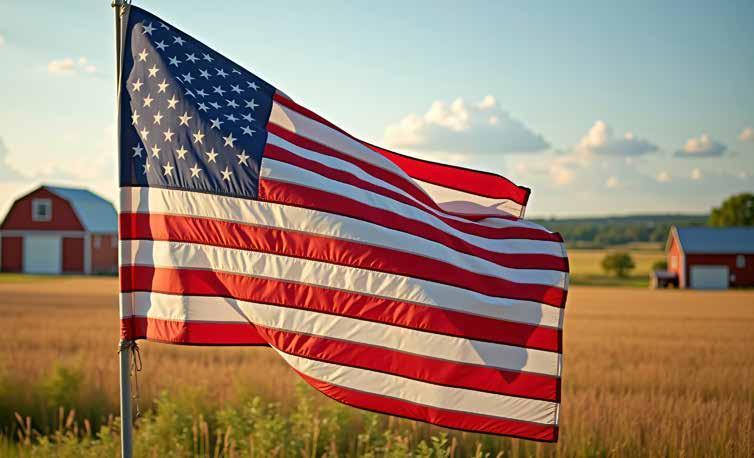


Chris Teutsch UK Research and Education Center, Princeton
What a spring! We just couldn’t seem to get a four-day period with no rain. The net result is a very late first hay harvest. It was the first week of June before we got a rain free period long enough to get our hay up at the research station in Princeton, and our guys moved making more than 650-4’ x 5’ rolls in a couple of days! Yields and moisture at baling were good but quality, well that is another story. As the grass, reaches maturity (gets mature seed) yield goes up, but quality decreases (Figure 1). This year, we were on the right side of this figure, good yield but lower quality. We have already got our hay testing results back from the lab for our first cutting and that is exactly what they show (Table 1).
I wish we could have been timelier in our hay harvest this spring, but weather conditions were just not conducive to dry hay harvest. In fact, weather records indicate that we are seeing a trend toward fewer baling days in May (baling day = 3 curing days + 1 harvest day). It is just getting tougher to be timely with our first cutting. So, what do we do? The list of practical solutions is short; in fact, there is really one viable alternative and that is baleage. High quality baleage can be made with a curing window as short as two days (one day
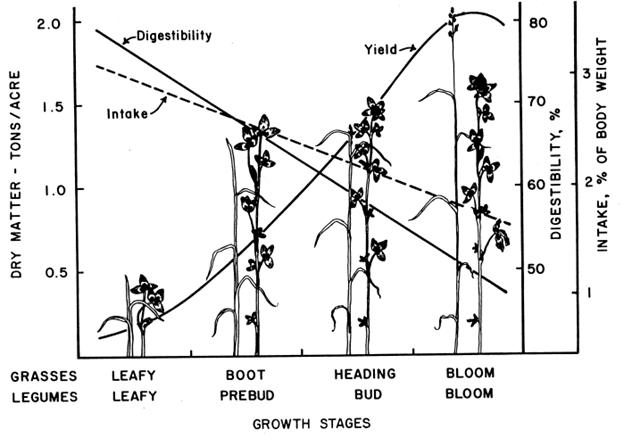
to mow and wilt and a second day to bale and wrap). This provides more opportunities to harvest at the correct stage of maturity (late boot to early head).
In years like this one, hay testing becomes even more important. Since most of Kentucky’s first cutting hay was put up at an advanced stage
of maturity, testing is going to be a critical part of making sure that we meet the nutrient requirements of our cows this winter. The single most important factor impacting rebreeding is body condition at calving. To design an effective supplementation program for our lower quality hay, we must know the quality. If you have never tested your hay, this is the year to start!
FEATURED UPCOMING EVENT
Kentucky Intermediate Grazing School • Woodford County Extension Office • Sept. 24-25 • More information at https://forages.ca.uky.edu/ events
FEATURED PUBLICATION
AGR-235 Baleage: Frequently Asked Questions by Jimmy C. Henning, Chris Teutsch, Ray Smith, Brandon Sears and Lisa Baxter. You can access it at https://publications.ca.uky.edu/files/AGR235.pdf or by visiting your local extension office.
FORAGE MANAGEMENT TIPS
• Test first cutting hay and use the results to develop a
supplementation strategy for winter.
• Graze summer annual pastures and fertilize with 40-60 lbs. N/A if regrowth is desired.
• Identify pastures to stockpile for winter grazing. Pastures should be well drained and have a strong sod. Limit summer grazing, so that they are ready to grow as conditions cool and rain comes in late summer.
• Do NOT mow hayfields or graze pastures closer than 4-5 inches.
• Soil test pastures to determine nutrient needs.
• Use UK variety testing results to select varieties that will be planted in the fall.
• If drought occurs, confine animals to one pasture and feed hay.
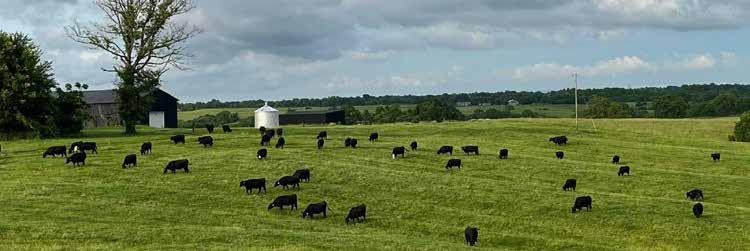
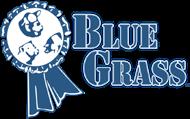
Blue Grass Albany 1274 Hwy 90 W Albany, KY 42602 606-387-4681
Jeffrey Cyphers, Manager 270-459-1193
Blue Grass Campbellsville 265 Airport Road Campbellsville, KY 42719 270-465-4051
Ronnie Choate, Manager 270-766-8240
Blue Grass Internet Sales
4561 Iron Works Pike Lexington, KY 40588 859-255-7701
Adam Menker, Manager 419-310-5344
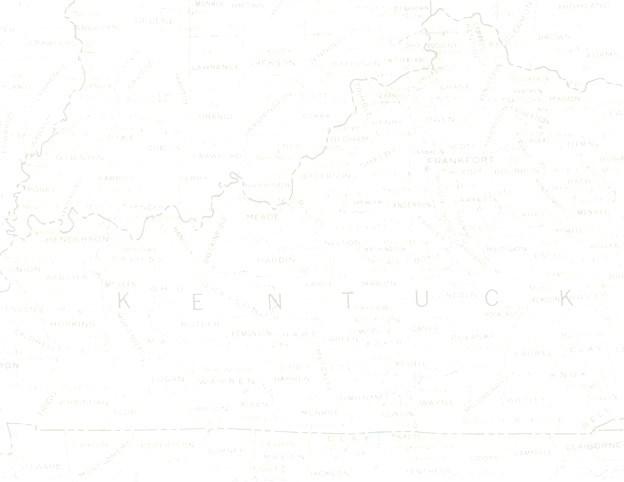
Blue Grass East-Mt. Sterling 3025 Owingsville Road Mt. Sterling, KY 40353 859-498-9625
Mike Havens, Manager 859-398-1087
Blue Grass Lexington 4561 Iron Works Pike Lexington, KY 40588 859-255-7701
Jeremy Shryock, Manager 859-967-6479
Farmers Stockyards 255 Helena Road Flemingsburg, KY 41041
606-845-2421
Corey Story, Manager 606-209-1543
Blue Grass Richmond 348 K Street Richmond, KY 40475 859-623-1280
Jim Dause, Manager 859-314-7211
Blue Grass South-Stanford 277 Cordier Lane Stanford, KY 40484 606-365-0665
Dylan Holt, Manager 502-680-4903
Simmental Assoc Fall Sale September 27, 2025
Stud Wagyu October 10-11, 2025 Millenium Longhorn Sale & Futurity October 17-18, 2025
Alexander Angus Sale October 25, 2025 KY Hereford Assoc Feeder Sale December 11, 2025

Michelle Arnold DVM (Ruminant Extension Veterinarian, UKVDL)
The New World screwworm (NWS, Cochliomyia hominivorax) is a blow fly that is native to the Western Hemisphere. Unlike most species of blow flies, adult female screwworms do not lay eggs on dead and decaying flesh. Instead, they lay eggs on living mammals at the borders of fresh wounds or at the edge of body orifices. The larvae (maggots) feed on the host’s living flesh, causing extensive damage by tearing at the host’s tissue with sharp mouth hooks (see Figure 1). The term “myiasis” is used to refer to the infestation of wounds by fly larvae/maggots. The wound will become larger and deeper as more eggs hatch and larvae feed on the living tissue, which may result in secondary infection and death if left untreated. New World screwworm is a pest that poses a dangerous and significant agricultural, economic and public health threat to livestock, wildlife, pets and people.
Adult New World screwworms are metallic blue or green blow flies about the size of a common housefly or a bit larger with three distinct stripes that run down the top (thorax) of the fly just behind the head with large orange eyes (see Figure 2). The Old World screwworm fly, (OWS, Chrysomya bezziana), is found in Africa, the Indian subcontinent and southeast Asia. OWS and NWS are designated “the
primary screwworms.” Cochliomyia macellaria (the secondary screwworm) is also a metallic blue blow fly with three distinct stripes that lives in the Americas and Caribbean, but the adult secondary screwworms primarily lay eggs on dead and decaying flesh (carrion). Although the secondary screwworm does not pose a threat to animal health, the adult flies and maggots look very similar to NWS, making confirmation of NWS myiasis much more challenging.
As mentioned previously, adult female NWS flies lay eggs on living mammals at the borders of wounds or at the edge of body openings on the mucous membranes. Almost any wound is attractive to the female, whether the wound occurred naturally (for example, from fighting, predators, thorns, disease, tick or insect bites) or was man-made (from shearing, branding, castrating, dehorning, tail docking and/or ear-tagging). The most commonly infested wounds are navels of newborn animals and the vulva and perineum of their dams, especially if there was any trauma when giving birth. Flies are also highly attracted to velvet shedding in deer. Eggs may also be deposited on mucous membranes that enable maggots to invade through natural body openings including the nostrils
and associated sinuses, the eye orbits, mouth, ears and genitalia. One female fly can lay 200-300 eggs at a time and on average will lay four batches in her 10–30day lifespan. Screwworm eggs are creamy and white and are deposited in a shingle-like raft on or near the edges of superficial wounds or body openings. This distinct pattern helps distinguish them from the eggs of other species of flies, which are generally not organized.
The eggs hatch within 12–24 hours, and the larvae immediately begin to feed, burrowing head-downwards into the living tissue. Larvae can usually be observed within the wound by the third day and are oriented with their rear ends up toward the surface. There can be as many as 200 maggots packed in deeply from a single infestation. Existing infestations often attract additional NWS female flies to lay their eggs, resulting in deep and gaping wounds that may contain hundreds or thousands of larvae in various stages of development. However, large pockets of screwworms can exist despite only small openings in the skin, but movement can be seen under the skin beneath the wound. Mature larvae can reach 17 mm in length (2/3 of an inch) and have spines that protrude from the body and wrap around in a spiral fashion, giving


New World screwworm is a devastating pest that can affect livestock, pets, wildlife, occasionally birds, and in rare cases, people. Adult screwworm flies are about the size of a common housefly (or slightly larger).
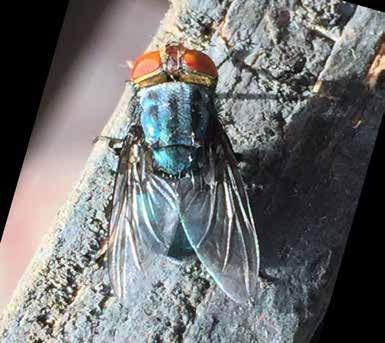
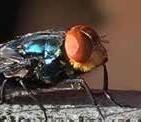
Also, the name screwworm refers to the feeding behavior exhibited by the maggots as they burrow (screw) themselves deep into the wound. After developing through three larval stages in five to seven days, the larvae leave the wound and drop to the ground, where they burrow into the soil to pupate. If the host dies before the larvae are mature enough to leave the wound and pupate, their survival is curtailed as they require living tissue as a food source. The duration of the life cycle in the ground is temperature and humidity dependent and can last from seven days to two months, but the pupae cannot survive sustained temperatures below 46 degrees F. The entire life cycle may be completed in as little as three weeks depending on temperature, moisture and soil type.
New World screwworm was eradicated from the U.S., Mexico and Central America by repeatedly releasing sterile male flies that mated with wild female screwworms
red eyes a metallic blue-green body shorter center stripe a yelloworange face
Screwworm larvae (maggots) burrow into a wound, feeding as they go like a screw driving into wood. The maggots cause extensive damage by tearing at the hosts’ tissue with sharp mouth hooks. The wound becomes deeper and larger as more maggots hatch and feed on living tissue.
tapered at both ends

pale color with encircling bands of dark spines
dark posterior tracheal tubes

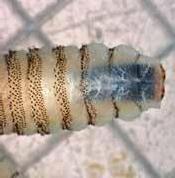
Scan the QR code to learn more about this pest. Immediately report signs to your State Animal Health Official (www.usaha.org/saho/) or USDA Area Veterinarian in Charge (www.aphis. usda.gov/contact/animal-health)
https://www.aphis.usda.gov/sites/default/files/nws-pest-card.pdf.
to produce unfertilized eggs. This “sterile insect technique” was effective because males mate with multiple females while the female mates only once. This led to a reduction in screwworm numbers and eventually complete elimination from the U.S. in 1966. This approach, along with regular active surveillance and animal inspections to prevent entry of any animal infested with larvae, proved highly successful and pushed the fly population south of Panama to the Darién Gap (along the border between Columbia and Panama) in 2006. APHIS maintains the only NWS pupae sterilization facility in North America known as COPEG, which stands for “PanamaUnited States Commission for the Eradication and Prevention of Screwworm.” The facility is located in Pacora, Panama but managed jointly by USDA and Panama. COPEG produces, sterilizes and releases 20 million pupae per week for maintenance of the barrier with the capacity to increase to 100 million pupae per week during an outbreak.
The Darien Gap quarantine line held with only occasional cases in areas west of the Panama Canal until 2023, when the New World screwworm became reestablished north of the Panama Canal (Figure 3). There have been over 6,500 cases in 2024, and on Nov. 22, 2024, Mexico notified APHIS of a positive detection. On Feb. 26, 2025, APHIS announced it was shifting sterile fly dispersal to the northern most point in Mexico of the current outbreak. As of May 2025, the fly had moved as far north as Veracruz, Mexico. On May 11, 2025, U.S. Secretary of Agriculture Brooke Rollins suspended live cattle, horse and bison imports from Mexico through U.S. ports of entry along the southern border since the most probable pathway for NWS to enter the country is through infested individuals or animals arriving at border crossings or interior ports of entry. APHIS is investing $109.8 million to keep the pest from spreading into North America with the goal of eradicating NWS in
• Maggots in wounds or other body openings, such as the nose, ears and genitalia or the navel of newborn animals.
• Wounds that have bloody discharge and foul odor.
• Wounds that become deeper and larger as the maggots grow and feed on living tissue. Larvae may not be seen at all if the wounds are deep.
• Animals that are showing signs of pain including depression, irritability, not eating and isolating themselves from other animals or people. Animals may be seen rubbing against trees and/or standing in water.
• Co-infestation with maggot species that feed on dead tissue may also occur. Because they feed on live flesh, NWS maggots may burrow deep into wounds or openings, while other species of maggots may appear around the outer surface of the wound and hide the screwworm larvae from detection.
Central America and Mexico and re-establishing the biological barrier in the Darien Gap. The last time NWS was in the U.S. was the Florida Keys outbreak in 2016-2017 when five dogs, two pet pigs, two cats, one raccoon, and 135 Key Deer were affected (15% of the Key Deer population died) during the outbreak. It cost $3.2 million to finally eradicate the fly.
Texas is at high risk for NWS because of its border with Mexico but what about Kentucky? Every state is at risk due to international travel of people, pets and livestock. If you suspect NWS (see Box 1), immediately report any suspicious wounds, maggots or infestations to a local accredited veterinarian, your state animal health official or a USDA veterinarian. Definitive field identification of screwworm adults and larvae can be difficult, even with a microscope, and can only be confirmed by submitting specimens for expert diagnosis. A
USDA accredited veterinarian or state/federal authority will take the necessary samples and send them to NVSL for identification. The affected animal will be held in quarantine until official parasite identification is obtained and, if confirmed, treatment is administered until no larvae remain in the wound. Treatment is generally by application of organophosphate insecticides into infested wounds, both to kill larvae and to provide residual protection against reinfestation. A list of effective pesticides is available at https://www. aphis.usda.gov/sites/default/ files/pesticides-for-nws.pdf. Preventive measures include the spraying or dipping of susceptible livestock with organophosphate compounds and, more recently, use of avermectins (ivermectin, doramectin) as subcutaneous injections to animals “at risk.” For more information, APHIS maintains a dedicated website at: https://www.aphis.usda.gov/ livestock-poultry-disease/cattle/ ticks/screwworm.
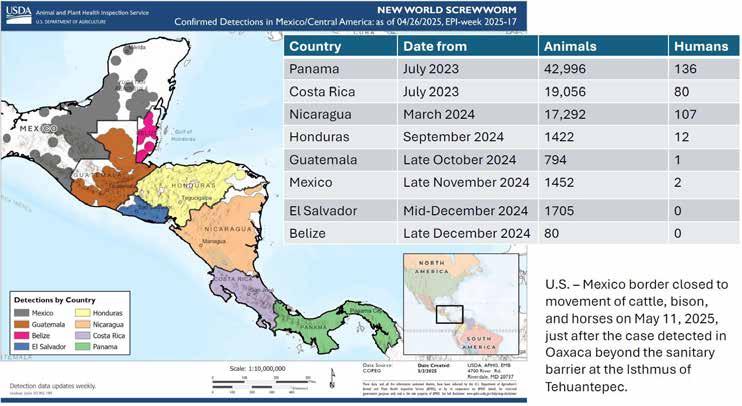
Josh Maples Mississippi State University Extension
The latest beef trade numbers from USDA show a continuation of larger imports and softer exports than during 2024. This is the first monthly report to reflect impacts of the ongoing tariff discussions. On the live animal side, the data show smaller imports of cattle from Mexico prior to the recent border closure.
Beef exports totaled 237 million pounds in April—down 7% from March and down 9% from April 2024. Year-to-date exports are 4% lower than in 2024. The drop in exports to China was the most staggering – down 68% from a year ago. Exports to Hong Kong offset some of that decline, but combined shipments to the region were still cut in half. South Korea continued to be a bright spot, taking
more U.S. beef than any other country and posting year-over-year growth. Japan also ticked higher in April.
U.S. beef imports hit 475 million pounds in April, down 5% from March but up 45% from April 2024. So far in 2025, imports are up 28% year-to-date as compared to January to April 2024. Brazil was the largest import source in April with shipments up over 300% from last April. Australia, Uruguay and New Zealand also posted sizable gains. For our North American trading partners, imports from Canada were down 14% and imports from Mexico were down 1% from a year ago.
The international trade complex for beef is dynamic and responds to shifts in relative prices. Tight domestic
supplies of beef production, strong domestic prices and ongoing tariff discussions are all impacting the flow of beef to and from the U.S.
Also worth mentioning is the status of cattle imports from Mexico during April. Although the southern border is now closed to live animal imports due to New World screwworm concerns, cattle were allowed to cross during April under stricter guidelines and limited locations. A total of 88,000 head of cattle were imported from Mexico during April. This was a 59% decrease from a year ago. In total, 192,000 head of cattle were imported from Mexico from January to April, this is down from 479,000 during the first four months of 2024.
In the mid-1920s, a determined group of Caldwell County residents took a bold leap to reshape agriculture in Western Kentucky. Pooling their resources, they purchased 400 acres of farmland near Princeton and invited the University of Kentucky to establish a forwardthinking experiment “sub-station” dedicated to crop and livestock research.
Although tobacco and soil fertility captured headlines at first, the community had something else squarely in its sight: beef cattle. From the very beginning, the promise of bigger, healthier herds fueled a pioneering spirit that would go on to transform the region’s farming landscape.
When the West Kentucky SubExperiment Station opened in 1925, the very first facilities included a dairy barn and modest paddocks. While dairy dominated the early livestock projects, extension agents and local producers began pushing for more research on beef cattle management, health and feeding strategies. In 1928, the station launched its first beef-centered research trial by introducing small groups of yearling steers onto improved pastures. Researchers tracked weight gains and profitability, using fields that were carefully limed and reseeded with clover. The results were dramatic. Cattle on these improved plots gained far more than those on unimproved, weedy pastures. Those findings demonstrated how better grazing practices could bolster beef production in an era when local pastures were often nutrient-poor. By the early 1930s and 1940s, Princeton had expanded its beef research to include many studies such as feedlot-style “fattening” trials and more partnerships with surrounding producers. Fattening improvements
Jordan Strickler University of Kentucky
The UKREC beef research has become critical to producers both inside and outside the commonwealth.
The Princeton-based program has served beef cattle producers in Western Kentucky and beyond through improved forages, genetics and herd management strategies.
required better pastures.
Samual Lowry, the facility’s first superintendent, stated that "It is my belief that our brightest ray of hope for any marked increase in the agricultural wealth of Kentucky will be found in further development of our livestock industry, following the development of better pastures, and that the average farmer will of necessity be led to produce better pastures."
In 1961, the station started a purebred Hereford breeding herd. Establishing a purebred herd signaled that UKREC would be a source of improved beef genetics and breeding insight for Kentucky producers. The herd allowed researchers to conduct breeding trials, evaluate cow-calf management under Western Kentucky conditions, and raise bulls for testing.
In 1962, almost immediately after the Hereford herd was formed, the facility hosted Kentucky’s first performance-tested bull sale. This annual “Princeton Bull Sale” became a celebrated event for the next two decades, where bulls from the station’s herd (and later from
cooperating breeders) were sold to farmers based on measured performance.
The 1970s and 1980s ushered in a new era of comprehensive beef research. In those years, faculty and staff recognized that a robust, uniform and well-managed herd was essential for meaningful science.
“Our cattle herd back then was all over the place – different ages, breeds, you name it,” said Roy Burris, emeritus faculty in the Beef Center of Excellence.
The turnaround really gained steam in the early 1980s under new leadership and vision. Researchers and farm managers worked to develop a more uniform, wellmanaged herd (Herefords were being replaced by Angus) that would serve as a reliable platform for experiments.
“We essentially rebuilt the herd from the ground up,” Burris said. “They shortened the calving season so that calves were born in a tight window, and they introduced performancebased culling to remove poor producers. Over time, the Princeton herd became known for its uniformity and health and surprised a lot of people.”
With a solid herd in place, UKREC expanded into new areas of beef research in the late 20th century. One major focus became preconditioning. Kentucky was an early adopter of preconditioning programs (like the state’s renowned CPH-45 feeder calf sales), and UKREC provided the science to back them up.
Station experts studied how preconditioning affects calf weight gain and health, demonstrating that calves managed under these protocols brought producers higher market returns and reduced sickness.
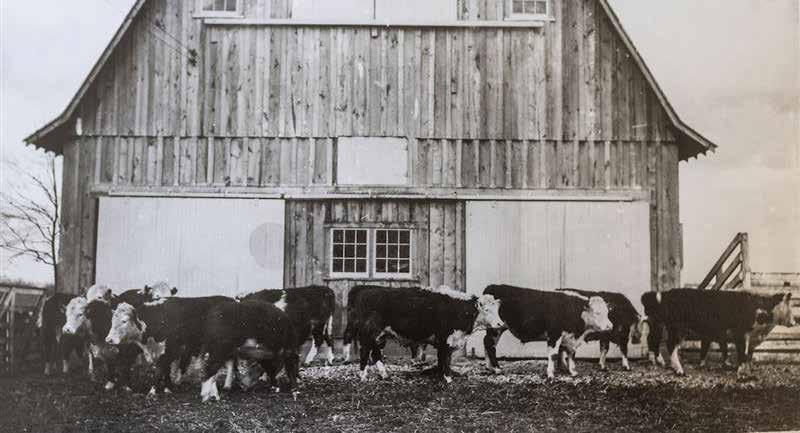
“We proved what our producers suspected – investing in herd health before sales pay off,” Burris said.
Nutrition research also took off. UKREC researchers investigated optimal feed programs for cow-calf operations, from improved pasture forages to supplemental feeding strategies during winter.
In the 1990s, partnerships with UK’s Lexington campus allowed the facility to analyze cattle feed efficiency and growth at a deeper level. Nutritionists in Lexington ran lab tests on forage quality, while UKREC staff conducted feeding trials. This tag-team approach led to advances in using by-product feeds (like distillers’ grains from the bourbon industry) and refining mineral supplementation to prevent deficiencies in Kentucky herds.
Future growth, lasting commitment
In recent years, UKREC has embraced cutting-edge technology, including “smart” ear tags to measure animal behavior and alert herd managers and researchers to animal health concerns and reproductive performance. The herd has also undergone genomic testing to learn more about the genetics of individual animals within the herd.
The unit has also used technology to measure individual animal feed
and mineral intake, which is a powerful tool in nutrition studies. Animals within the herd have been managed under two different mineral supplementation strategies for over 15 years to study the impact of selenium source on animal performance and reproduction.
Results from this work have been incorporated into industry recommendations to help producers combat selenium deficiency, which is a common challenge in the state and region.
“One of the reasons this work has been so impactful is that the amount of selenium that can be fed to livestock is regulated, so producers cannot simply feed more selenium to combat deficiencies, but they can feed a better type of selenium,” said Katie VanValin, assistant professor in the Department of Animal and Food Sciences at UKREC.
While technology assists researchers with collecting cutting-edge data from cattle out on pasture, these technologies also represent future opportunities for Kentucky’s beef producers, with a secondary goal of determining how these technologies can be adopted and used by producers to improve efficiency on their own operations.
The unit is also the future home of the Beef Extension Education Farm,
which will provide a location for producers to see demonstrations of best management practices in a practical environment and participate in hands-on experiential learning opportunities and programs. Efforts are underway to construct facilities to support these efforts and welcome producers back to the farm.
A cornerstone for Kentucky’s beef industry
After a century of progress, the UK Research and Education Center at Princeton stands as a cornerstone of Kentucky’s $1 billion beef cattle industry. Generations of farmers have attended UKREC field days and carried new ideas home to their pastures. The facility’s influence now extends beyond state lines – other land-grant universities often look to UKREC’s beef program as a model for integrating research, extension and producer partnerships.
With its blend of heritage, research and deep ties to the community over the past 100 years, UKREC station is not only celebrating a century of beef cattle research – it’s actively building the future of beef, for Kentucky and beyond.
To see the latest UKREC beef research and how the facility is advancing the industry, visit https://ukrec.ca.uky. edu/.
Will Snell , Extension Professor
Currently, there are a plethora of policy actions being discussed in our nation’s capital affecting agriculture, ranging from the farm bill debate to tax policy modifications, and of course, the ongoing trade policy developments. Following two extensions of the 2018 farm bill, lawmakers are attempting to pass some form of a farm bill this session to address a slumping, volatile and uncertain farm economy. At the center of this debate has been the tradeoff of funding for nutrition programs versus farm programs. Lawmakers are presently attempting to incorporate certain provisions of the farm bill into a budget reconciliation package as a means to increase chances of passing legislation in this session that will improve the overall future safety net for U.S. agriculture. Among the topics being proposed are increasing reference (safety net) prices for farm bill crops, boosting crop insurance subsidies, raising payment limitations, pulling in more conservation funding into the farm bill funding baseline, along with expanding base acres that are eligible for farm program payments.
Despite tightening crop profit margins, USDA is actually projecting an actual increase in net farm income for 2025, but only on the heels of $30.8 billion of additional government farm support evolving from the American Relief Act of 2025 passed last December. Ten billion dollars of this amount was designated to the Emergency
1. Primary Coronavirus Food Assistance Programs (CFAP1 and CFAP2)
2. Payments Authorized in 1996, 2002, and 2008 Farm Bills
3. Primarily Price Loss Coverage (PLC), Agriculture Risk Coverage (ARC), Counter-Cyclical Payments (CCP) and Deficiency Payments (LDP)
4. Market Facilitation Payments (MFP) from the Trade War in 2018-2020
5. Small Business Administration's Paycheck Protection Program (PPP)
6. Includes Wildfire and Hurrican Indemnity Program (WHIP), Emergency Relief Program (ERP), Emergency Livestock Relief Program (ELRP) and other disaster programs
Commodity Assistance Program (ECAP) to compensate producers for increased input costs and falling commodity prices. To date, USDA through the Farm Service Agency, has distributed nearly $110 million dollars of ECAP funding to Kentucky farmers, with the potential to increase to more than $130 million in a likely second round of funding. For more details on ECAP, visit https://tinyurl.com/ mkrpjhtv. U.S. Ag Secretary Brooke Rollins has indicated that the remaining $20 billion evolving from the American Relief Act will become available soon in the form of a disaster fund declaration. While Washington, D.C. devotes considerable attention to farm bill programs to support agriculture, which have been important to certain sectors of Kentucky agriculture (primarily grain and dairy farms), in reality, outside of conservation funding, farm bill programs have not accounted for a significant amount of Kentucky farm income in recent years and arguably over the past two decades. The bulk of government payments to Kentucky farmers in recent years have come outside of the farm bill in the form of disaster and ad hoc payments in response to crises such as trade wars, weather events and COVID.
As part of an $8 billion farm economy, Kentucky farmers received $512.5 million from two rounds of Coronavirus Food Assistance Program (CFAP) pandemic payments from the federal

government (in 2020 and 2021), along with $386.2 million in Market Facilitation Program (MFP) trade war assistance payments which were authorized by USDA in 2019. In fact, during the life of the 2018 farm bill, only about a quarter of Kentucky’s direct government payments for agriculture have evolved from farm bill programs.
Given Kentucky’s agriculture diversity, farmers have generally been less dependent on farm bill programs compared to the U.S. as whole, with exception of the years when Kentucky farmers received tobacco buyout payments (2005-2014). Unlike other direct government payments to farmers, which were provided by taxpayer dollars, the tobacco buyout, while administrated by USDA, was funded by assessments on domestic tobacco companies selling cigarettes in the U.S. market. In reality, despite significant ad hoc and funding for other government farm programs, tobacco buyout payments totaling more than $2.3 billion are by far the largest single source of “government” payments received over the past two decades, accounting for over onethird of Kentucky’s direct government payments for agriculture and roughly the equivalent to the payments that Kentucky has received from all farm bill program payments combined from 2004-2023. ⃣
Jonathan Shepherd , Extension Specialist Jordan Shockley , Associate Extension Professor
As woodland landowners look for income diversification opportunities, they may explore the potential of carbon sequestration as a revenue stream, particularly the potential income from woodland carbon programs. The federal income tax implications of this type of income are still not fully addressed in current tax law. This is not to mention that some states are analyzing tax law creation or changes to offset potential decreases in tax revenue generation due to possible decreased logging activity for standing timber enrolled in carbon programs. While the IRS has offered some guidance on underground carbon sequestration, it has yet to provide specific direction regarding income earned from carbon storage in standing, above-ground timber.
One thing that is almost always certain in the U.S. tax system is this: income is taxable unless specifically excluded by law. That includes income from carbon programs. Regardless of whether the payment is made for leasing rights, selling credits or participating in carbon offset programs, receiving compensation for carbon sequestration is likely to be considered a taxable event. However, how that income is taxed and potential deductions to income depend heavily on how the income is characterized under the Internal Revenue Code.
In the U.S., income is generally characterized as either ordinary income or capital gains. Ordinary income is taxed at progressive rates and may also be subject to self-employment tax if it arises from an active trade or business. Capital gains, by contrast, are typically subject to more favorable long-term tax rates. While there are exceptions that exist, we typically think of selling timber as a capital gains event. Consequently, the way payments for woodland carbon programs are classified has significant implications for woodland landowners, especially those who may not be operating as a formal business but are nevertheless participating in carbon markets.
In August 2023, the IRS released Private Letter Ruling (PLR) 202334007, which provided some helpful, albeit limited, guidance. In that case, a real estate investment trust was receiving payments for underground carbon sequestration services, and the IRS ruled that these payments could be treated as rents from real property, qualifying income under Section 856 of the tax code. This is a very brief and naïve interpretation of a PLR, and one should seek qualified tax counsel to fully understand the implications of how this ruling may or may not relate to a given situation. While this PLR was a step toward guiding how carbon sequestration income should be characterized, it did not address openair sequestration on forested land. The ruling focused exclusively on subsurface injection of carbon and surface use for exploration but did not extend to the open-air sequestration performed by trees through photosynthesis.
This omission leaves woodland owners and their advisors in a gray area. A key unanswered question is whether carbon sequestration income from standing timber might also be characterized as rental income, which is generally treated as ordinary income, not subject to selfemployment tax. If the income were treated instead as compensation for services or business activity, it could be subject to both ordinary income tax and self-employment tax. On the other hand, if structured carefully, the transaction might be positioned to receive capital gain treatment, particularly if tied to the use or disposition of a capital asset. However, without direct IRS guidance, these possibilities remain speculative. Much of the tax treatment will likely come down to the specific terms of the contract between the woodland owner and the carbon project developer. These contracts vary widely; some involve leasing land rights, others involve selling carbon credits tied to the sequestration capacity of a forest and some might include performance-based payments or revenue-sharing models. Each variation

may influence how the income is classified and reported.
Beyond income characterization, several other tax-related uncertainties remain unresolved from the perspective of the authors of this article:
• Basis adjustments: It is unclear how, if at all, the basis of the timber or land might be affected by carbon sequestration payments. Could the basis be recovered, such as depletion in extractive industries (i.e., oil and gas)?
• Wildfire or disaster payments: If a fire or disease damages the timber stand, how would any associated insurance proceeds or contract payouts be taxed?
• Responsibility for forest management: Who bears the cost (and reaps the benefits of deductions) for maintaining the timber stand under the carbon contract? Could certain expenses be capitalized or deducted?
• Duration and permanence obligations: Many carbon contracts require the landowner to defer timber harvest for decades. The long-term nature of these commitments could have implications for installment sale treatment, long-term capital gains or even constructive receipt rules.
In summary, while carbon markets offer a promising financial opportunity for woodland owners, the federal tax landscape remains murky, especially when it comes to open-air sequestration from standing forests. Until the IRS or Congress provides more definitive guidance, landowners should proceed carefully and work closely with qualified tax advisors and legal counsel to evaluate contract structures, reporting strategies and risk exposure. This is a relatively new frontier and will likely evolve alongside the carbon markets themselves. ⃣
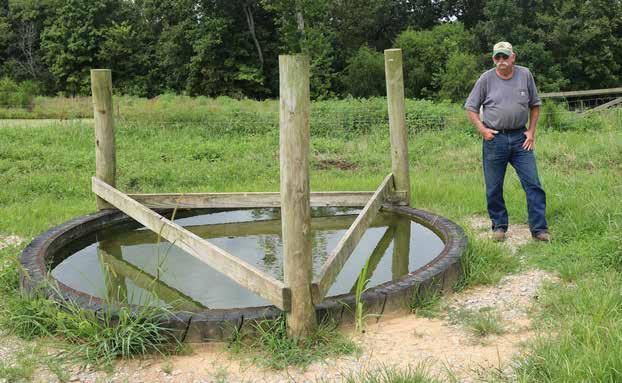
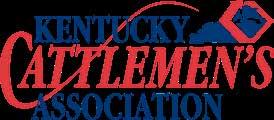
* MEMBERSHIP YEAR 10/1/24– 9/30/25
NAME SPOUSE NAME FARM NAME
*Payments of KCA membership dues are tax deductible for most members as an ordinary and necessary business expense. However, charitable contributions of gifts to KCA are not tax deductible for Federal Income Tax purposes. Due to new IRS regulations, $2.24 of your dues would not be deductible. Approximately $12 of your dues will go towards the monthly publication Cow Country.
PLEASE CHECK THE MEMBERSHIP(S) YOU WOULD LIKE TO JOIN:
KCA MEMBERSHIP ($30/YR) NEW RENEWAL
Membership dues are $30 unless otherwise listed below
KCA COUPLE MEMBERSHIP
To add your spouse, please add $15 to your KCA Membership
KENTUCKY JUNIOR CATTLEMEN’S ASSOCIATION ($10/YR) NEW RENEWAL
I WOULD LIKE ADDITIONAL INFORMATION ON THE YOUNG PRODUCER’S COUNCIL
TOTAL MEMBERSHIP:
$ KCA
$ KJCA
TOTAL CONTRIBUTIONS:
$ CATTLEMEN’S FOUNDATION DONATION (voluntary)
TOTAL AMOUNT ENCLOSED:
$ ALL DONATIONS TO KCF ARE TAX DEDUCTIBLE
COUNTY DUES
Dues are $30 except for the counties listed below.
Allen...............................$40
Anderson........................$25
Bourbon.........................$20
Boyle ..............................$35
Bullitt..............................$20
Butler..............................$25
Franklin ..........................$25
Louisville Area ................$20 (Jefferson, & Spencer) Magoffin .........................$20 Menifee ..........................$25
Mountain........................$25
(Breathitt, Floyd, Knott, Lee, Leslie, Letcher, Morgan, Owsley, Perry & Wolfe)
Highlands .......................$20 (Boyd, Johnson, Lawrence, & Martin) Hopkins ..........................$35 Laurel.............................$35
Woodford......................$25
IF YOU WOULD ALSO LIKE TO JOIN THE NATIONAL CATTLEMEN’S BEEF ASSOCIATION The NCBA is now a State Marketing Partner with the KCA. You can pay your dues to both organizations with one check, at the same time.
+

Briley New Kentucky Beef Council
FFA Convention time across the commonwealth is always an eye-opening experience—whether you're a student, vendor, visitor, sponsor, or, if you're lucky, an intern. I was heavily involved in FFA throughout high school, and until this year, I never experienced convention without wearing the blue and gold jacket. FFA and its annual convention have always held a special place in my heart, but this year, it felt more like a blessing than ever before.
My internship with the Kentucky Beef Council has been nothing short of amazing. From countless opportunities and new relationships to industry insight and inspiration, this experience has meant so much to me. While preparing materials for the convention, I often found myself thinking, “This is a lot of work for something students might not even notice.” But the moment the trade show doors opened and students ran toward the Beef Council booth, it all made sense. Their enthusiasm and gratitude reminded me exactly why we do what we do—to educate, to connect and to inspire.
Over the course of two days, we gave out 1,500 “Beef. It’s What’s For Dinner.” T-shirts. To earn a shirt, students and advisors had to post on social media about how they advocate for the beef industry. It was incredible to see their creativity and passion come to life in real time. I still remember being a junior in high school and signing a proclamation to become a Beef Advocate. Even then, I knew I wanted to support the best industry in the world. On June 11, 2025, I had the honor of witnessing 33 young people take that same step by signing the Kentucky Beef Council’s Young Beef Advocate Proclamation. This special ceremony recognized these students' commitment to becoming the next generation of Beef Advocates. They were joined by KCA Executive Vice President Dave Maples and KBC Chairman Ryan Miller as they pledged to share not only their own stories, but also those of Kentucky’s 32,000 beef farming families. It has truly been a blessing to serve as the 2025 Kentucky Beef Council Summer Intern. This internship has been an absolute blast, and I can’t wait to continue learning and advocating for an industry I love so much.
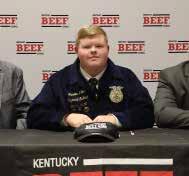
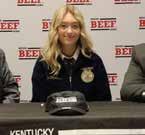
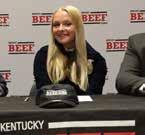
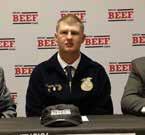
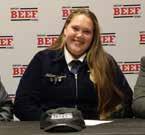
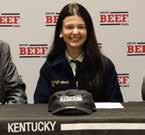
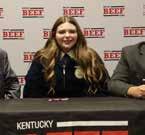
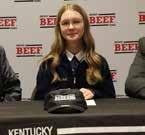
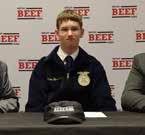
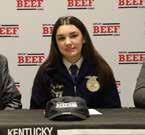
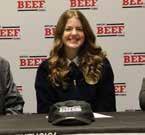
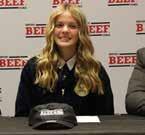

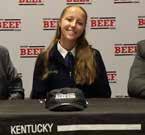
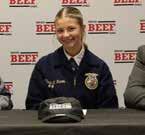
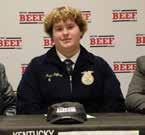
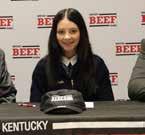

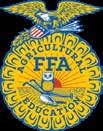
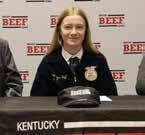
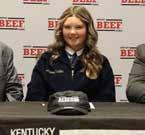
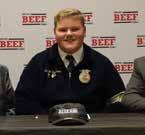
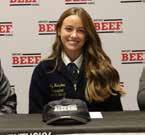
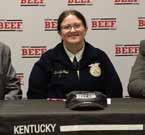
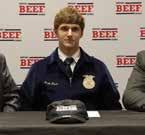
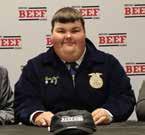
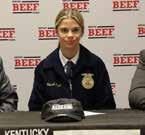
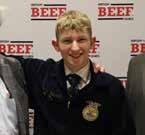
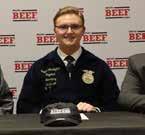
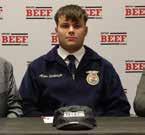
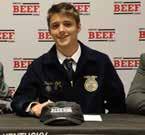

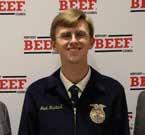
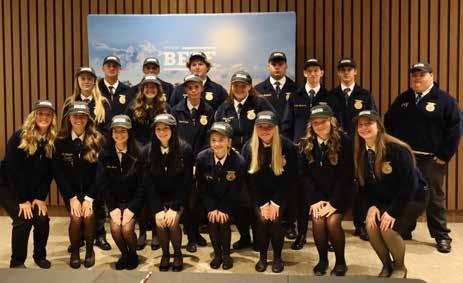
Hudson Hancock Adair County
Jack Fishback Adair County
Adalyn Holt Anderson County
Bailee Marshall Anderson County
Carpenter Sloan Anderson County
Kaden Sipe Anderson County
Lyanna Willman Anderson County
Natalie Chambers Anderson County
Reagan Lay Anderson County
Reese Miller Anderson County
Sawyer Cunningham Anderson County
Sophie Collins Anderson County
Evan Cotton Caldwell County
Preston Lynn Casey county
Brayden Snow Casey County
Zoey Keyes Greenup County
John Furnish Harrison County
Kylie Miller LaRue County
Renesamee Huff LaRue County
Cyrus Bivens LaRue County
Maddox Coffman LaRue County
Elly Hampton Madisonville North Hopkins
Nataleigh Morck Madisonville North Hopkins
Gracie Pike Nelson County
Landon Miller Nelson County
Danielle Tapp Webster County
Hannah Clark Webster County
Ella Bush West Carter
Cheyenne Robinson Western Hills
Anna Moore Western Hills
Addison Sanford Western Hills
Addison Shaffer Western hills
Carter Hutcherson Western Hills

Jake Harrod Program Coordinator, Kentucky Beef Network
I grew up on my family’s cattle farm in Frankfort, where we raise both purebred Charolais and commercial cattle. As a cow-calf operation, our focus is on calving out cows and caring for the calves until they’re weaned. Once the calves are healthy and fully weaned, we sell them— sometimes through breed-specific or graded sales, and other times at the local stockyards. From there, the cycle begins again.
But those calves don’t stop with us. Some go to backgrounders for a time, while others head straight to feedlots. Eventually, they’re fed to a desired weight and sent to a processor. The beef then moves on to restaurants or grocery stores—ultimately landing on someone’s plate. Now many people in the industry are familiar with this process, but I think it’s important to take a step back and look at the bigger picture. It’s easy to focus solely on our own part of the cattle industry and forget that what we do directly impacts the quality of the final product.
Every decision we make at the cowcalf level affects the consumer’s eating experience. When someone sits down to enjoy a steak or burger, they shouldn’t have to wonder if the animal was mistreated or be afraid of what they are eating—they should feel confident that it is of the highest quality and was raised with care and respect. And that trust starts with us.
So how does what we do on the farm affect the food that ends up on someone’s plate?
One simple example is where we give injections. Administering shots in the neck rather than the rump helps protect the high-value cuts of

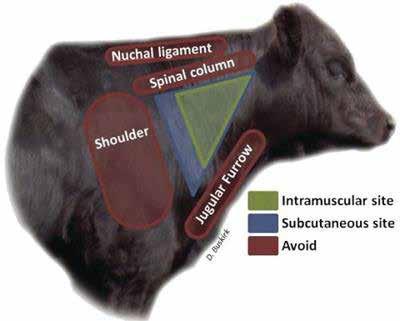
meat. There’s no high dollar meat cut that comes from the neck. Giving injections in the rump can lead to blemishes or lesions in the muscle, which processors have to trim out— literally cutting value off the carcass. That loss may seem small at first, but over time it adds up, and those costs trickle back to the producer.
Stress management is another key factor. Research shows that cattle exposed to high stress levels can produce darker, less appealing meat. By handling our animals in low-stress environments, we not only protect meat quality—we also make the work safer and more efficient for ourselves.
Calm cattle are easier to move, less likely to injure themselves and easier to work with overall.
Making small adjustments—like changing where we give injections or how we handle cattle—can have a big impact. It benefits the consumer by improving beef quality, and it benefits us by protecting the value of the animals we raise.
For those looking to improve their practices and strengthen consumer trust, I encourage you to check out the Beef Quality & Care Assurance (BQCA) program at https://www. kybeefnetwork.com.

Dan Miller Industry Coordinator, Kentucky Beef Network
May continued to be too wet to make hay, which is a blessing to us because we were busy managing the cow herd through the synchronization process to get everything ready to AI. This year, we had 25 replacement heifers and 70 cows bred through AI. The replacement heifers were pelvic measured the end of April, then CIDR’s went in on May 14. The heifers follow a seven-day synchronization protocol, and the CIDR’s came out on May 21. Jason Crowe with GENEX bred the heifers on the afternoon of May 23 The heifers were sorted into two groups, one getting bred to Angus (Architect) and the other to Hereford (Richmond). The heifers will get cleaned up with an Angus bull. The cows also follow the seven-day synchronization protocol. Their CIDR’s went in on May 20 and were pulled on May 27. The 70 cows were
bred on May 30 by David McGlothlin with Genetics Plus. The cows were also sorted into two groups, one getting bred to Angus (Sustain) and the other to Hereford (Smokey). The cows will also get cleaned up with Angus bulls.
The cleanup bulls were turned in on the first week of June and will remain with the cows for approximately 45 days and will get pulled out around July 20. This will give all the cows three heat cycles to get bred and retain our tight calving window. Any cows are open at the pregnancy check in September will get culled.
I want to say a huge Thank You to both Jason Crowe and David McGlothlin for their help developing our herd at Eden Shale Farm. Their expert advice and insights into the complex industry of bovine genetics is top notch, and we truly appreciate their professional services.
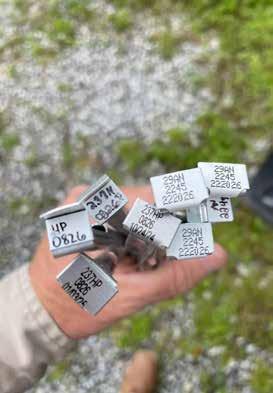
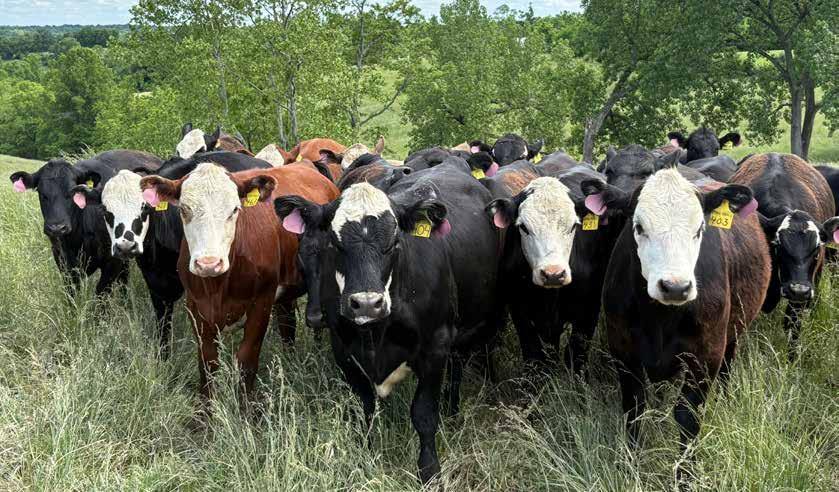
Generally the Buyer is responsible for collecting the Beef Checkoff assessment from the Seller

However, both the Buyer and the Seller are responsible for seeing that the Checkoff is collected and paid. or pays $2 to
QUALIFIED STATE BEEF COUNCIL
Cattlemen’s Beef Board invests in national Checkoff programs, while Kentucky Beef Council invests in state programs.
If you are a producer from one of these seven states - Alaska, Connecticut, Maine, Maryland, Massachusetts, New Hampshire, and Rhode Island - you will remit directly to the Cattlemen’s Beef Board. If you have any questions regarding who is responsible for remitting the Checkoff assessment or how to remit payment, please contact your State Beef Council or the Cattlemen’s Beef Board at (303) 867-6304.
3 Exceptions to Beef Checkoff Collection: 1. Non-producer status: If a person (or company) owns cattle for 10 days or less, purchases the cattle to facilitate the transfer of ownership to a third party, and certifies that any Checkoff dollars due from the previous owner have been collected, then that person qualifies as a “Non-Producer” and the Checkoff assessment is not due when qualified cattle are resold. 2. Organic Exemption: In the 2002 Farm Bill, Congress created a process exemptiing organic producers from paying Checkoff program assessments. 3. Pre-Payment: Producers can also choose to “prepay” the Checkoff assessment when shipping cattle out of state for feeding and still retain ownership on the cattle. This allows the producer to direct half of the $1-per-head national Checkoff assessment to the beef council in the state where the cattle were raised, rather than the state where the cattle will be fed. Note: To claim any of these exemptions, the person selling the cattle must provide the proper ‘document’ to show that the Checkoff assessment is not due at the time of sale. Thus, the rule of thumb for all cattle sales is that the person paying the producer should collect either a “Dollar or a Document.”
LIVESTOCK MARKET - When cattle are sold through a livestock market or video market, the Market collects and remits the Beef Checkoff assessment.
CATTLE DEALER/ORDER BUYER - When cattle are sold to a Cattle Dealer or Order Buyer, the Dealer/Order Buyer collects and remits the Beef Checkoff assessment.
ANOTHER PRODUCER - Both the Buyer and the Seller are responsible for making sure that the Beef Checkoff assessment is collected and remitted. For clarity and consistency, we encourage the Seller to take on this compliance responsibility.
VEAL GROWER - When dairy calves are sold to a Veal Grower, both the Buyer and the Seller are responsible for making sure that the Beef Checkoff assessment is collected and remitted. For clarity and consistency, we encourage the Seller to take on this compliance responsibility.
CATTLE SHOWS AND FAIRS - When producers sell their animals at fairs or cattle shows (4H/FFA shows, Purebred cattle shows, etc.), the Organization that runs the sale collects and remits the Beef Checkoff assessment.
FEEDLOT - When cattle are sold directy to a feedlot, the Feedlot collects and remits the Beef Checkoff assessment.
PACKING PLANT - When cattle are sold to a packing plant, the Packing Plant collects and remits the Beef Checkoff assessment.
DIRECT-TO-CONSUMER BEEF SALES - When producers market their cattle as beef, the Producer is responsible for remitting the Beef Checkoff assessment.
According to the Paperwork Reduction Act of
an agency may not conduct or
person is
to a
it
to
The
for this
of
and
control
OMB control
collection is 0581-0093. The time required to complete this
collection is estimated to
per response, including the
one
for reviewing instructions, searching existing data sources, gathering and
the
and completing and reviewing the
of
The U.S. Department of Agriculture (USDA) prohibits discrimination in all its programs and activities on the basis of race, color, national origin, age, disability, and where applicable, sex, marital status, familial status, parental status, religion, sexual orientation, genetic information, political beliefs, reprisal, or because all or part of an individual’s income is derived from any public assistance program. (Not all prohibited bases apply to all programs.) Persons with disabilities who require alternative means for communication of program information (Braille, large print, audiotape, etc.) should contact USDA’s TARGET Center at (202) 720-2600 (voice and TDD). To file a complaint of discrimination, write to USDA, Director, Office of Civil Rights, 1400
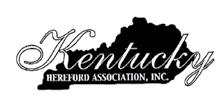
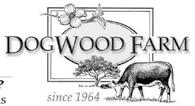
Toby & Debby Dulworth 2492 S. Kirkman Road LaCenter, KY 42056 (270) 224-2993 • dogwood@brtc.net Herefords that thrive on forages. www.dogwoodherefords.com

Codee Guffey • 1815 Grassy Springs Road Versailles, Kentucky 40383 (502) 598-6355 rockridgeherefords@gmail.com www.rockridgeherefords.com
Tony & Kathy Staples
992 Knotts Road
Brandenburg, KY 40108 (270) 945-9277 (270) 422-4220
tstaples@bbtel.com
Registered Polled Herefords
HANSELL PILE, JR.
12045 St. John Rd.
Cecilia, KY 42724
270-735-5192
12 miles West of Elizabethtown
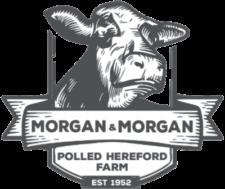
JNHE “Live from Louisville” July 12-18 Louisville, KY
Kentucky State Fair Open Hereford Show
Sunday August 24, 2025 8:00 am
Polled Herefords
439 Flatwoods Frozen Camp Rd, Corbin KY 40701

(270) 320-2389
Toby & Debby Dulworth
Bobby & Brenda Wells (606) 344-0417
wells_farm@yahoo.com
Kevin, Angela, Kenlea & Kyler Murray (606) 528-1691 or (606) 682-8413
2492 S. Kirkman Road LaCenter, KY 42056 (270) 224-2993 dogwood@brtc.net
Herefords that thrive on forages. www.dogwoodherefords.com

6077 Helena Road Mayslick, KY 41055
6077 Helena Road Mayslick, KY 41055
Charlie Boyd II 606-584-5194
Charlie Boyd II 606-584-5194
Annual Bull Sale second Saturday in March Hereford and Angus Bulls
Annual Bull Sale second Saturday in March Hereford and Angus Bulls
Chambliss
Hereford Farms
Brad, Carla, Clay & Clint Chambliss 1101 Driftwood Lane
Elizabethtown, KY 42701
Brad, Carla, Clay & Clint Chambliss 1101 Driftwood Lane Elizabethtown, KY 42701 Home (270) 982-3905 Cell (270) 668-7126 fax 270-735-9922
Home (270) 982-3905
Cell (270) 668-7126 fax 270-735-9922
www.chamblissherefordfarms.com
www.chamblissherefordfarms.com
Registered Polled Herefords Bulls & Females for sale
WCN Polled Herefords Since 1961
Tim & Peggy Wolf
Bill Norris
12939 Peach Grove Road Alexandria, KY 41001
2220 Celina Road
Burkesville, KY 42717
Home: 859-635-0899 Cell: 859-991-3484
Phone (270) 433-7256
Cell (270) 433-1525
“Every calf needs a white face”

Peyton’s Well Polled Herefords The Lowell Atwood Family 133 Edgewood Drive • Stanford, KY (606) 365-2520 home/fax (606) 669-1455 cell
Victor- influenced cattle bred for
Dale Stith
Polled Herefords 439 Flatwoods Frozen Camp Rd, Corbin KY 40701
Bobby & Brenda Wells (606) 523-0569 or (606) 344-0417 wells_farm@yahoo.com
5239 Old Sardis Pike Mays Lick, KY 41055 dalestith@yahoo.com (918) 760-1550
Kevin, Angela, Kenlea & Kyler Murray (606) 528-1691 or (606) 682-8413

Registered Polled Herefords
PAUL L. HANCOCK 8559 KY 56 Owensboro, KY 42301 270-771-4194
Registered Polled Herefords PAUL L. HANCOCK 8559 KY 56 Owensboro, KY 42301 270-771-4194

President: Chris Hopper 606-584-7842
Secretary/ Treasurer: Melinda Watson 859-625-8660 melindawatson8660@gmail.com
Melinda
5239 Old Sardis Pike Mays Lick, KY 41055
• 859-625-8660 melindawatson8660@gmail.com
K3 CATTLE REGISTERED HEREFORDS KYLE BUSH
K3 CATTLE REGISTERED HEREFORDS
KYLE BUSH K3CATTLE@YAHOO.COM 859-588-4531
K3CATTLE@YAHOO.COM 859-588-4531 198 HICKS PIKE CYNTHIANA, KY 41031
198 HICKS PIKE CYNTHIANA, KY 41031

Polled Hereford and Gelbvieh Cattle 3459 KY Hwy. 1284 E. Cythiana, KY 41031 (859) 234-6956
Polled Hereford and Gelbvieh Cattle 3459 KY Hwy. 1284 E. Cythiana, KY 41031 (859) 234-6956
Ben, Jane, Shelby and Lincoln
Ben, Jane, Shelby and Lincoln
Tony Brandenburg, tstaples@bbtel.com
Jackson Farms
Registered Polled Herefords PO Box 215 Cross Plains, TN 37049 615-478-4483
Registered Polled Herefords PO Box 215 Cross Plains, TN 37049
615-478-4483
billymjackson@aol.com
billymjackson@aol.com
“Farming the Same Land Since 1834”
“Farming the Same Land Since 1834”
Eric & Ronnie Thomas 2396 Union City Rd. Richmond, KY 40475 (859) 623-5734
Eric & Ronnie Thomas 2396 Union City Rd. Richmond, KY 40475 (859) 623-5734
Eric’s Cell (859) 314-8256
Eric’s Cell (859) 314-8256
“Cattle for sale at all times”
“Cattle for sale at all times”
Jackie D. Perkins II 367 Mt. Pisgah Rd. Bremen, KY 42325 (270) 543-3586
Jackie D. Perkins II 367 Mt. Pisgah Rd. Bremen, KY 42325 (270) 543-3586
Breeding to produce good cows since 1981
Breeding to produce good cows since 1981
12 miles

Registered Polled Herefords

BECKLEY HEREFORDS

Bulls & Females for sale
Tim & Peggy Wolf
12939 Peach Grove Road
L. Wayne Beckley • 1420 Fitchburg Rd. Ravenna, KY 40472 • 606-723-3021 Cell: 859-779-0962
Alexandria, KY 41001
Home: 859-635-0899
Cell: 859-991-3484
L.W. Beckley D.V.M 284 Pyrse Lane • Irvine, KY 40336 Cell: 859-779-1419 • Clinic: 606-726-0000 www.beckleyherefords.com

L. Wayne Beckley • 1420 Fitchburg Rd. Ravenna, KY 40472 • 606-723-3021
Cell: 859-779-0962
L.W. Beckley D.V.M
284 Pyrse Lane • Irvine, KY 40336
Cell: 859-779-1419 • Clinic: 606-726-0000 www.beckleyherefords.com
“Breeding Polled Herefords for over 58 Years” Breeding cattle for sale at all times. 1999 Walnut Hill Rd. Lexington, KY 40515 (859) 271-9086 cell (859)533-3790
&
Tucker Stock Farms
“Breeding Polled Herefords for over 58 Years” Breeding cattle for sale at all times.
1999 Walnut Hill Rd. Lexington, KY 40515 (859) 271-9086 cell (859)533-3790 Tucker
“Registered Angus and Polled Herefords”
John Tucker II 1790 Hidden Valley Lane Hudson, KY 40145 270-617-0301
“Bulls always for Sale”
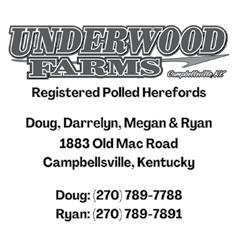
BOYD BEEF CATTLE
6077 Helena Road
Mayslick, KY 41055
Charlie Boyd II: (606) 584-5194
Blake Boyd: (606) 375-3718 www.boydbeef.com cboyd2@maysvilleky.net
BURTON & SONS ANGUS
Joe D. or Karen Burton
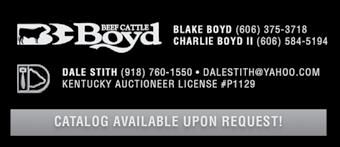
927 Old Liberty Pike • Hustonville, KY 40437 (859) 238-0771 • www.branchviewangus.com
James S. & LuAnn Coffey, Donald & Donna Coffey
Annual Production Sale- 2nd Saturday in April

480 Hominy Hill Rd. Nancy, KY 42544
Joe: (606) 305-3081
Located 15 miles West of Somerset • klburton01@windstream.net
Bulls & females sold private treaty. Inquiries Welcome. Sell only what we would buy. Data driven since 1981.
FALL CREEK ANGUS
448 Corder Farm Road
Monticello, KY 42633
Ronnie Corder (606) 348-6588
HILL VIEW FARMS
Jimmy Gilles 5160 Lee Rudy Road Owensboro, KY 42301 (270) 929-5370 jcgilles86@gmail.com
APS ANGUS
4040 Taylorsville Rd
Taylorsville, KY 40071
Gordon Schubert
502-477-2637 • 502-548-8440
Anne Patton Schubert 502-477-2663 • 502-548-2359

TWIN CREEK FARM
HILL VIEW FARMS
(606) 375-3718
Vice
Secretary/Treasurer:

BURKS CATTLE CO. 531 Rick Rd.
Park City, KY 42160
Eddie Burks • (270) 991-6398 www.burkscattle.com
(270) 635-1137
Gibson

COFFEY ANGUS FARMS
661 Hopewell Road Liberty, KY 42539
Matt Coffey: (270) 799-6288
Dewey Coffey: (606) 706-2699
Genetics for Maximum Profitability since 1984

(606)
GREAT MEADOWS ANGUS ASSOCIATION
COFFEY ANGUS FARMS
661 Hopewell Road Liberty, KY 42539
Dale Brown, President 292 Pea Ridge Road Stamping Ground, KY 40439 859-940-8437 www.greatmeadowsangus.com
Matt Coffey: (270) 799-6288

SALES: 3rd Saturday in October • 4th Saturday in April
Dewey Coffey: (606) 706-2699
Genetics for Maximum Profitability since 1984
DAVIS BEND FARMS
LYNN CREEK FARMS
2315 Davis Bend Road Canmer, KY 42722
Kris and Sara Lynn 2184 Bardstown Rd Springfield KY 40069 573-721-6663
FALL CREEK ANGUS
SMITHLAND ANGUS FARM
448 Corder Farm Road Monticello, KY 42633
Ronnie Corder (606) 348-6588
4437 East Hwy 80 Russell Springs, KY 42642
Henry Bryan, Melissa, Bryanna and Blane Smith 606-271-7520 bmsmith@duo-county.com
HAMILTON ANGUS FARMS


Eddie Hamilton 2142 Stilesville Road Science Hill, KY 42553 edjohami@aol.com (606) 271-1286 Bulls and Females for Sale
PLEASANT HILL FARMS
PLEASANT HILL FARMS
Jimmy Gilles 5160 Lee Rudy Road Owensboro, KY 42301 (270) 929-5370 jcgilles86@gmail.com
Shawn, Melissa, Devin & Dylan Gibson (270) 337-3072 or (270) 692-5304 Dennis & Emily 270/337-2128 or 270/402-4338

RANDOLPH FARM
JOHNSON FARMS ANGUS
Angus Bulls & Females Slaughters, KY
Keith: (270) 635-0723 Reese: (270) 635-1137
6550 Highway 330 Owenton, KY 40359 Carter Randolph: (513) 543-4343 Nick Sarky: (513) 262-9846 patty@randolphfarmoperations.com Bulls Available


Gil, Mary, Corbin, Caroline, and Catherine Cowles 500 Rockfield Richpond Road Rockfield, KY 42274 (270) 843-9021 • Fax (270) 843-9005
HERITAGE FARM
DUTCH CREEK ANGUS FORAGE GENETICS
Lynn 2184 Bardstown Rd Springfield KY 40069 573-721-6663
Doug and Susan Schlosnagle (502) 706-0008
DutchCreekAngus.om
MT. MORIAH ANGUS FARMS
Bob, Kathy, Rob, and Janna Clark (859) 748-5558 1446 Kennedy Bridge Rd. Harrodsburg, KY 40330 Bob: (859)339-2610 • Rob: (859)612-1594 mtmoriahfarms1@gmail.com www.mtmoriahangus.com
HERITAGE FARM
Tom McGinnis 1024 Hinkle Lane • Shelbyville, KY (502) 633-1634, home (502) 633-5100, work (502) 655-0164, cell
FOUR KINGS ANGUS
250 Bright Leaf Dr. • Harrodsburg, KY 40330
Cary & Kim King Carymking@yahoo.com • fourkingsangus.com

jacob.tamme@gmail.com www.tammevalley.com

Cary Cell: (859) 613-3734 • Colby Myers - Purebred Manager
timmothyljeffries@gmail.com www.davisbendfarms.com Tim: (270) 528-6605 • Leslie: (270) 528-6435 OLD BARK FARM
OLD BARK FARM
370 Ferrill Hill, Buffalo, KY 42716
D
Nathaniel & Darla Denham
Nathaniel(Bub), Sarah, (606) 423-2457 • (606) tripledangus.com
370 Ferrill Hill, Buffalo, KY 42716
Kenley Conner (502) 905-7825
Registered Angus Cattle
Kenley Conner (270) 735-5324 Registered Angus Cattle
TWIN CREEK FARM Shawn, Melissa, Devin (270) 337-3072 or (270) Dennis & Emily 270/337-2128 or 270/402-4338
TRIPLE D ANGUS
Nathaniel & Darla Denham Nathaniel(Bub), Sarah, Ashley Denham (606) 423-2457 • (606) 875-0780 tripledangus.com


CANNON ANGUS
Gil, Mary, Corbin, Caroline, and Catherine Cowles 500 Rockfield Richpond Road Rockfield, KY 42274 (270) 843-9021 • Fax (270) 843-9005 Located 7 miles west of Bowling Green, 1/2
Tom McGinnis 1024 Hinkle Lane • Shelbyville, KY (502) 633-1634, home • (502) 633-5100, work (502) 655-0164, cell
Located 7 miles west of Bowling Green, 1/2 mile off Hwy 68/80
TAMME VALLEY FARM
SMITHLAND ANGUS FARM 5202 East Hwy 80, Russell Springs, KY 42642 Charles “Bud” & Pam Smith: (270) 866-3898 Henry & Melissa Smith: (270) 866-2311
Jacob Tamme, Owner-Operator (859) 583-7134 jacob.tamme@gmail.com www.tammevalley.com & Find us on Facebook!
Mary Jayne and Victoria Cannon 4619 Cherry Grove Rd Flemingsburg, KY 41041 606-748-5420 www.cannonangusfarm.com


KENTUCKY ANGUS ASSOCIATION MEMBERSHIP APPLICATION
Return to: Shayna Gibson 1535 Fallen Timber Road New Castle, KY 40050 • Annual Dues $35
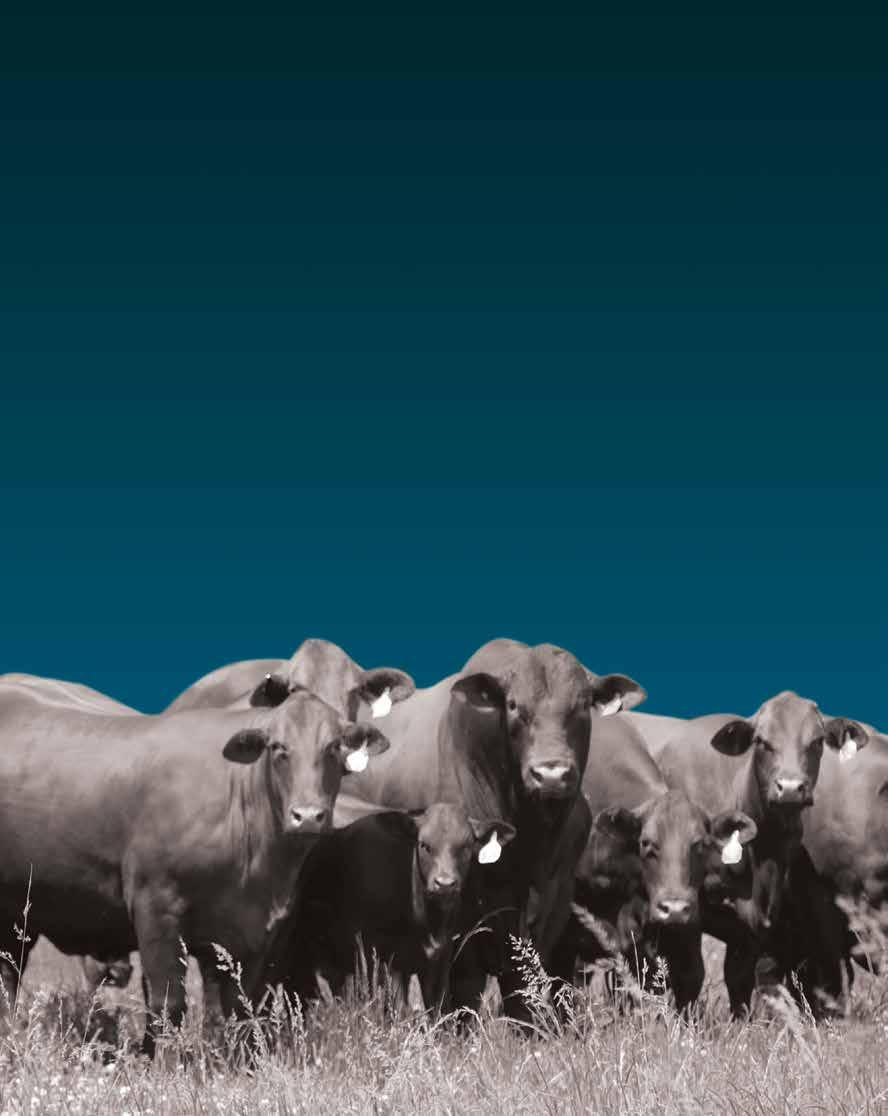
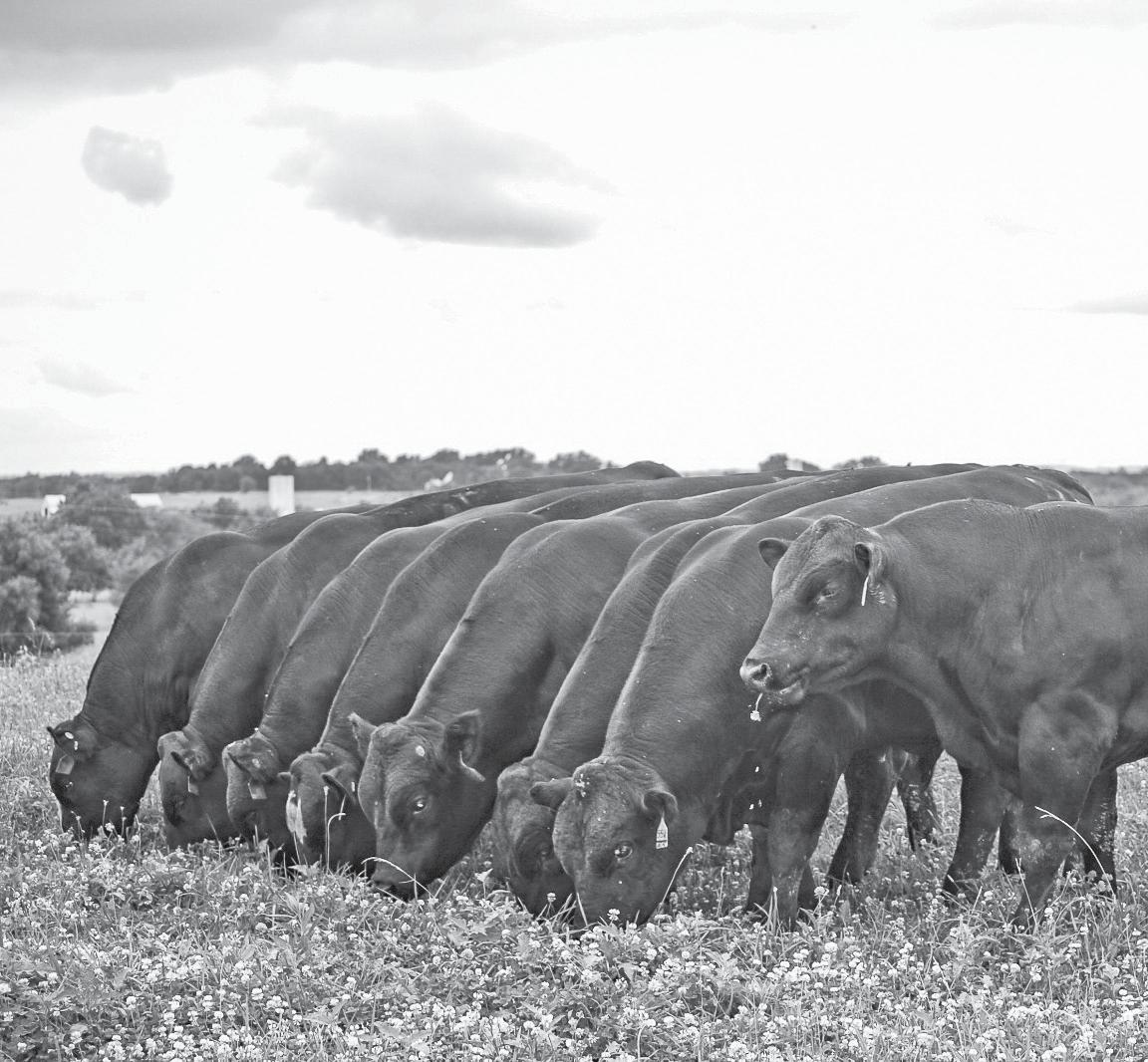
KEVIN AND RACHEL BARRON
Crestwood, Ky (502) 905-5851
rkbarron812@gmail.com

SWAIN SELECT SIMMENTAL 12113 Green Valley Dr. Louisville, KY 40243 swainselect.com swainselect@gmail.com facebook.com/swainselectsimmental

Fred & Phyllis: 502-599-4560 Chi & Angie: 502-287-2116

JUDY AND RONDAL DAWSON 1156 Buzzard Roost Road Shelbyville, KY 40065 502-593-5136 • jrdawson22@outlook.com

JEROD METZGER • 270-779-6260
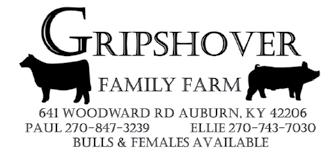
ROCKING P LIVESTOCK 8308 Orangeburg Road Maysville, KY 41056
Chan: 606-584-7581
Keith: 606-584-5626
rockingplivestock@maysvilleky.net
BRIAN & HEATHER SWAIN 3906 Pottertown Road Murray, KY 42071 • 270-293-4440
wksbswain@murray-ky.net


SIMMENTAL AND SIMANGUS BULLS FOR SALE
1939 Huntertown Road
Versailles, KY 40383
BULLS FOR SALE
Chris Allen 859-351-4486 callenuky@hotmail.com
Dr. Henry Allen 859-229-0755


Modern-day ranching requires more information to produce better animals. International Genetic Solutions works across breeds to provide more accurate head-to-head comparisons and maximum profitability.
IGS incorporates generations of data and the world’s largest multi-breed database to enable more powerful breeding decisions than ever before.
Better cattle. Better profits.

BRET AND LAURA JACKSON 859.533.3718 or 859.707.7200
BRET & LAURA JACKSON Paris, Kentucky (859) 533-3718 (859) 707-7200
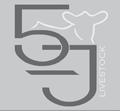
AA LAND & CATTLE
Daryl Derossett, President..................................................................................................................(270) 670-6232
Registered Gelbvieh & Balancers
Cynthiana, KY
LARRY CLARK & SONS LLC
Johnnie Moore, Vice President...........................................................................................................(270) 670-7814
Luke Arthur (859) 298-8323
Registered Gelbvieh Cattle
106 Clark Houk Road • Greensburg, KY 42743
Pat Tilghman, Secretary/Treasurer.......................................................................................................(270) 670-8449
luke.arthur93@gmail.com
Bulls • Show Prospects • Embryos Bulls sell with GE EPD’s • Show Prospects
IV
Larry Clark, Owner & Operator (270) 299-5167 • (270) 405-6848
Lpclarkandsons@msn.com
Barry, Beth & Ben Racke • Brad Racke • 7416 Tippenhauer Rd. • Cold Spring, KY 41076
BAR IV LIVESTOCK
Phone (859) 635-3832 • Barry cell (859) 991-1992 • Brad cell (859) 393-3677 • Ben cell (859) 393-3730 Fax (859) 635-3832 • bar4@twc.com
Barry, Beth & Ben Racke • Brad Racke
7416 Tippenhauer Rd. • Cold Spring, KY 41076
Phone (859) 635-3832 • Barry cell (859) 991-1992
Brad cell (859) 393-3677 • Ben cell (859) 393-3730 Fax (859) 635-3832 • bar4@twc.com
Niles & Betty K Bray • 1568 Bray Ridge Road Bedford, KY 40006 • (502) 255-3584
BEE LICK GELBVIEHS
CD FARMS
Eddie Reynolds 277 Old Bee Lick Rd. Crab Orchard, KY 40419
606-379-2281(H) 606-305-1972(C)
Clayton & Debbie Cash 1214 Ottawa School Road • Brodhead, KY 40409 (606)-308-3247 • (606)-758-8994
Bulls & Females for sale
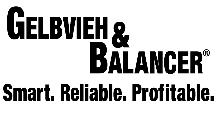
CLIFFORD FARMS
3459 KY HWY 1284E
Cynthiana, KY 41031
Since 1937 (859) 234-6956
Owner/Manager
GELBVIEH/BALANCERS
2050 Glasgow Road Burkesville, KY 42717
Gelbvieh-Balancer Bulls & Heifers For Sale by Private Treaty
Owner/Manager
GELBVIEH/BALANCERS
2050 Glasgow Road • Burkesville, KY 42717
Brian, Lauren, Kristen Barry, Emily & Julia (270) 864-5909
FULL CIRCLE FARMS
Registered Gelbvieh Cattle
Brian, Lauren, Kristen Barry, Emily & Julia • (270) 864-5909
PLEASANT MEADOWS FARM
CD FARMS
Clayton & Debbie Cash 1214 Ottawa School Road Brodhead, KY 40409 (606)-308-3247 • (606)-758-8994
Brad Burke 989 Metcalf Mill Road • Ewing KY 41039 (H) 606-267-5609 • (C) 606-782-1367 gbb789@windstream.net
Gary & Pat Tilghman • Carrie & Daryl Derossett Family • Lindsey & Garland Gilliam Family 690 Lick Branch Road Glasgow, KY 42141 270.646.7024 • pleasantmeadowsfarm@hotmail.com Registered Gelbvieh & Angus cattle for sale
R&D OWEN FARMS
Gelbvieh-Balancer Bulls & Heifers For Sale by Private Treaty
AA LAND & CATTLE
East Bernstadt, KY
606-843-6583
cell 606-309-4662



GELBVIEH & BALANCERS PO Box 781 • Eddyville, KY 42038 (270) 601-6830 • rdowenfarms.com • sales@rdowenfarms.com
Registered Gelbvieh & Balancers Cynthiana, KY Luke Arthur (859) 298-8323 luke.arthur93@gmail.com
DONE WRIGHT CATTLE FARMS
Black Replacement Heifers & Bulls Available Embryo transplant & AI sired calves
LARRY CLARK & SONS LLC
MOCKINGBIRD HILL FARMS
Registered Gelbvieh Cattle
Registered Gelbvieh Cattle 106 Clark Houk Road • Greensburg, KY 42743
Casey Wright, Owner 2665 Poplar Corner Road • Lebanon, Kentucky 40033 270-692-7496 * donewrightcattle@hotmail.com
Saturday May 15
Bulls • Show Prospects • Embryos Bulls sell with GE EPD’s • Show Prospects
Kentucky Junior Gelbvieh Show & Learning Clinic
ASHWOOD SPRING GENETICS
BAR IV LIVESTOCK
McIntosh Brothers Farm • 3348 Frankfort Road • Georgetown 10AM Learning Clinic • 12:30PM Show
Larry Clark, Owner & Operator (270) 299-5167 • (270) 405-6848 Lpclarkandsons@msn.com
BRIAN W. DYER, DVM
Shane Wells 10172 Provo Rd. Rochester, KY H: 270-934-2198 C: 270-791-8196 swells@logantele.com
Owner/Manager
GELBVIEH/BALANCERS

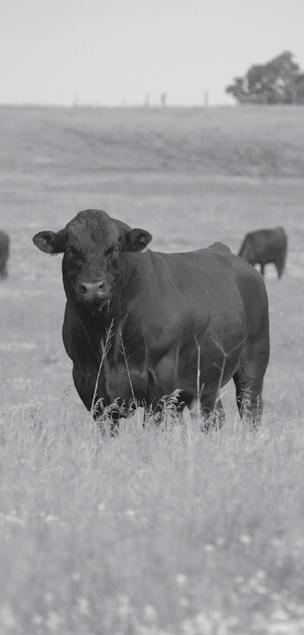
S&S GELBVIEH
Barry, Beth & Ben Racke • Brad Racke 7416 Tippenhauer Rd. • Cold Spring, KY 41076 Phone (859) 635-3832 • Barry cell (859) 991-1992 Brad cell (859) 393-3677 • Ben cell (859) 393-3730 Fax (859) 635-3832 • bar4@twc.com
BREEDING RED & BLACK POLLED GELBVIEH SINCE 1982
Call William McIntosh for more information. (502) 867-3132
Luke & Lindsay Arthur Cynthiana, KY 859-298-8323
Friday May 28 - May 30
AGJA Eastern Regional Junior Show “Run for the Roses” Burley Fields Livestock Center • 709 Oil Fields Road • Horse Cave
Cattle for sale at all times.
CLIFFORD FARMS 3459 KY HWY 1284E Cynthiana, KY 41031 Since 1937 (859) 234-6956
2050 Glasgow Road Burkesville, KY 42717
David, Jerri & Jon David: 162 Hastings Ln • Fredonia, KY 42411 (270) 556-4259 Arthur & Joyce Slaughter 19068 Marion Rd • Fredonia, KY 42411 (270)545-3455
Brian, Lauren, Kristen Barry, Emily & Julia (270) 864-5909

FULL CIRCLE FARMS REGISTERED GELBVIEH CATTLE
BAR IV LIVESTOCK
BEE LICK GELBVIEHS
FULL CIRCLE FARMS
BRIAN W. DYER, DVM
Call Carrie Derossett for more information. (270) 404-0828
Eddie Reynolds 277 Old Bee Lick Rd. Crab Orchard, KY 40419
Brad Burke: 989 Metcalfe Mill Rd, Ewing, KY 41039 (H) 606-267-5609 (C) 606-782-1367 gbb789@windstream.net
Entry and room information available at www.gelbvieh.org (Juniors/Regional Shows/AGJA Eastern Regional)
606-379-2281(H) 606-305-1972(C)
Barry, Beth & Ben Racke • Brad Racke 7416 Tippenhauer Rd. • Cold Spring, KY 41076 Phone (859) 635-3832 • Barry cell (859) 991-1992 Brad cell (859) 393-3677 • Ben cell (859) 393-3730 Fax (859) 635-3832 • bar4@twc.com
Registered Gelbvieh Cattle
Owner/Manager
PLEASANT MEADOWS FARM
Gary & Pat Tilghman

Lindsey Tilghman Jones Family
GELBVIEH/BALANCERS 2050 Glasgow Road Burkesville, KY 42717
HEDGESPETH LIVESTOCK GELBVIEH/BALANCER CATTLE-COMMERCIAL HEIFERS
Bulls & Females for sale
Brad Burke 989 Metcalf Mill Road • Ewing KY 41039 (H) 606-267-5609 • (C) 606-782-1367 gbb789@windstream.net
543 Pleasant Run Church Road • Campbellsville, KY 42718 sam.hedgespeth@gmail.com • Sam-270.299.5449 Seth-270.932.1615 Dan-606.686.1679 Andrew-270.405.1990
BEE LICK GELBVIEHS
Eddie Reynolds
PADON FARMS
277 Old Bee Lick Rd. Crab Orchard, KY 40419
606-379-2281(H) 606-305-1972(C) Bulls & Females for sale
GELBVIEH BULLS & FEMALES FOR SALE 1012 Shelby Road • Salem, KY 42078 Thad Padon (270) 836-5518
BRAY’S GELBVIEH CATTLE
Niles & Betty K Bray 1568 Bray Ridge Road Bedford, KY 40006 (502) 255-3584
Carrie & Daryl Derossett Family 690 Lick Branch Road Glasgow, KY 42141 270.646.7024 • pleasantmeadowsfarm@hotmail.
Brian, Lauren, Kristen Barry, Emily & Julia (270) 864-5909

FULL CIRCLE FARMS
RICH HILL GELBVIEH
Registered Gelbvieh Cattle
Frank McAninch 1341 Iven Godby Road Liberty, KY 42539
Brad Burke 989 Metcalf Mill Road • Ewing KY 41039 (H) 606-267-5609 • (C) 606-782-1367 gbb789@windstream.net
606-787-0120 richhillfarm@windstream.net

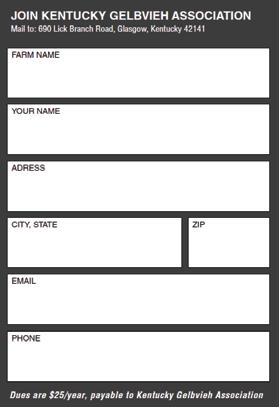
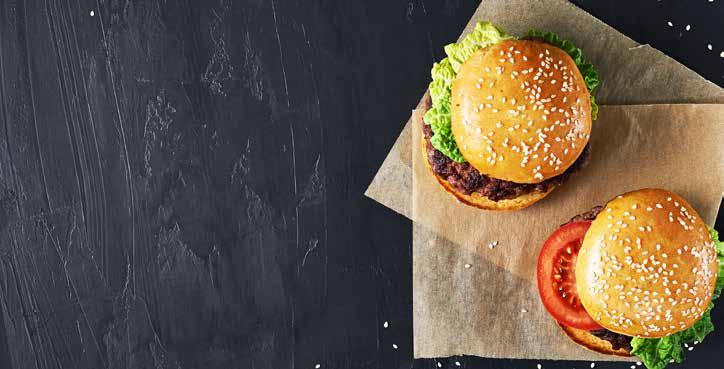
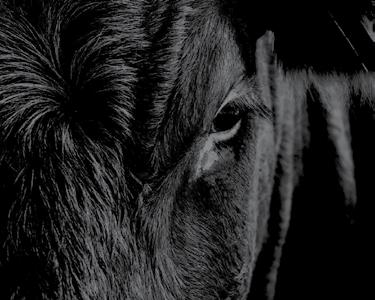
* FREE DELIVERY *
FOUR WINDS
PERFORMANCE TESTED PUREBRED ANGUS
BULLS FOR SALE Call 270-202-7186 for more info or check out www.oakhollowangus.com for current availability.
POLLED HERFORD BULLS FOR SALE
19–20-month-old Polled Hereford bulls. Good selection. Low birthweight, medium frame. Free Delivery Available. JMS Polled Herefords, Knifley, KY Danny 270-566-2694 Trent 270-566-2000
THE FOUNDATION SALE XI SAT. SEPT. 20, 2025 1 PM CT. United Producers, Bowling Green, KY Limousin Fullblood, Purebreed, Limflex. For Info. Call Stephen Haynes 270799-8685 OR 270-799-8684
REGISTERED BLACK SIMMENTAL BULLS
Many blaze faced. Excellent EPD’s. Semen Tested. Delivery Available. Maximize your profit with proven performance. All bulls qualify for new CAIP cost-share. Adam Wheatley 502349-2665
DIAMOND J SALERS
Donald Johnson • 11660 N. Hwy 1247 • Eubank, KY 42564 606-379-1558
DIAMOND J SALERS
WILLIS FARMS
Donald Johnson • 11660 N. Hwy 1247 • Eubank, KY 42564 606-305-8747
Danny Willis • 964 Johnson Rd • Frankfort, KY 40601 • 502-803-5011 drwc21@aol.com • Purebred + Optimizer Breeding bulls & Heifers for sale.
DEL-SU FARM
WILLIS FARMS
Howard & Sue Edwards • 420 Rose Rd • Somerset, KY 42501 606-679-1675 • Jeriah Privett • 606-416-1154
Danny Willis • 964 Johnson Rd • Frankfort, KY 40601 502-803-5011 • drwc21@aol.com
KNOB LICK FARM - BULLS & HEIFERS FOR SALE
Larry Cox • Tina Cox-Lynch • Amanda Cox Gibson • 1315 Knob Lick Road • Irvine, KY 40336 • 606-723-3077 • 606-975-1716
BREEDING AGE HEREFORD BULLS FOR SALE AT ALL TIMES Over 60 years of Line 1 Hereford Genetics. Groups of open and bred heifers available for sale at all times. Chambliss Hereford Farms. 270-668-7126
RED ANGUS, SIMANGUS, CHAROLAIS, ANGUS FOR SALE
Red Hill Farms, Lafayette, TN, 615-666-3098
Bart, Sarah and Ty Jones
Gordon and Susan Jones, 270-991-2663
Visit us online - www.RedHillFarms.net
Contact us for cattle and semen availability. Annual Production Sales:
More Than a Bull Sale – 3rd Saturday in March Maternal Monday – 3rd Monday in May Bulls & Females of Fall Sale – Last Saturday in October
REGISTERED ANGUS BULLS
January-February yearling bulls
Semen checked, birth weights and EPDS Calving Ease & Growth, BQA Metropolis, IL, 618-638-7693, www. bremerbrothers.com
BULLS FOR SALE
Angus and Lim-Flex Yearlings to 2-year-olds
Delivery available Call or text 270-589-7999
REGISTERED ANGUS BULLS FOR SALE
Yearlings and 2-Year-Old +
Private Treaty Sale Book @ Angus.Org
Semen Checked & EPDs Available Randolph Farm, Owenton, KY (513) 262-9846
Anderson Bale Wrapper- IFX660 Model- $24,995
John Deere 7320 cab loader 4WD - $60,000
H&S 310 spreader top feeder - $13,500
Rental- on commercial manure spreaders
Truck mount meyer 700- twin screw on a truck
TMR mixers- parts in stock
Meyer 4516 forage box- $$$$
Tubs- rims/ tires- knives- planetary fluids
S B 200 Artex manure spreader- $39,000
Meyer and Cloverdale TMR mixers in stock
Zero down $$$$ for 11 months
Kubota 90 skid lo
Esch 12 ft drill $$$$$ drill time
Meyer 4618- silage wagon-super clean $26,500
JD 567- string -$19,995
New Holland BR 7060-string - $11,995
Farmco feeders- in stock
JD 5420- 4wd canopy- loader $26,500
JD 6715- 2wd canopy- 16 PS- $$$$
Meyer tmr truck $122,000
Esch 4218/22 tedder $$$ save
Call Charlie for a hot deal today!!!!
859-608-9745
$15 FOR FIVE LINES OR GET A BOX THIS SIZE FOR $105 CALL KATIE PRATT (859) 278-0899

Les Anderson Beef Extension Specialist University of Kentucky
Times are good, finally, if you are in the cow-calf industry. Input costs (feed, etc.), although still high, have held steady while feeder calf prices reach all-time highs and profits are finally obtainable for many. It might seem odd but now is the perfect time to evaluate your production system and make necessary changes to prepare for when, inevitably, the market declines.
To determine what factors to adjust, producers first need to determine if they are marketing efficiently by producing a product that fits the intended market. The best example of this is a producer that wants to market feeder calves (400-600 pounds) at the stockyards, yet this producer does not control the calving season and has calves born throughout the entire year. The most inefficient method to market feeder calves is to sell “singles” meaning to sell each calf individually. Research from University of Kentucky agricultural economists has shown that singles are about $12/ cwt less valuable than similar calves sold in a group of five or more. So, this producer loses $60 per head (five weight calf) on average simply because the production system does not match the market strategy. This loss ($60 per head) may not seem like much today but is often the difference between profit and loss in smaller operations, particularly in a down market.
The easiest fix to the above problem is to enroll the calves in a CPH-like feeder calf marketing program. Multiple value-added sales like CPH occur throughout the year. These sales are designed
to help producers capture value in their calves by marketing them in larger groups. Another solution is to gain control of the calving season. Identify the month(s) you want to market in and the desired weight of your calves at marketing. So, if you want to market eight weights in June, you will want to calve from early September until the middle of October. If the calving season is currently year-round, shifting to this calving season will take some planning. The University of Kentucky has a couple of publications that can assist (https://afs.ca.uky.edu/ beef/publications/reproductivemanagement).
The benefits of a controlled calving season reach far beyond simply increasing market value. Short calving seasons reduce labor inputs and costs and increase the efficiency of most systems by increasing weaning weights and decreasing inputs costs. Research on 394 ranches in the Southwest indicated that year-round calvers sell 46 fewer pounds per year while spending $70 more to get their 500-pound calves to market. Less product to market at a higher cost is typically not ideal for most small businesses.
Another factor to consider is the overall fitness of the herd. Fitness refers to age, temperament, physical characteristics such as feet/leg and udder soundness, and producing ability (is she weaning a profitable calf?). Another “fitness” factor to consider is expected calving date. If you have cows that are not going to calve in your profit window, consider selling them and increasing your
replacement rate. Cull cows are high and now is the perfect time to improve the fitness of your herd. Gradually getting the cow herd younger and more fit during a high market is a great strategy to prepare for future profitability.
Producers should consider a few other things when profits are high. After the bills are paid, investing into your small business (cattle operation) may pay dividends later. Do you need to improve your handling facilities? Quicker, easier, stressfree handling is best for both the cattle and the handlers. Does the grazing and pasture management system maximize your grazing days to reduce feed costs? Now is the ideal time to evaluate your operation. Contact your local agriculture and natural resources extension agent and Kentucky Beef Network facilitator if you need another “set of eyes” on your production system.
Sustainability has been a buzz word in the industry, and the industry talks a quite a bit about sustainability, especially sustainability of the small farm. Small farm sustainability revolves around financial stability and optimizing profits during high and low market scenarios. Every cow-calf producer should be making money now, but can cowcalf producers maintain this when calf prices fall? If the answer is yes, then the production and marketing systems are in sync and the cow-calf operation can be sustainable. If the answer is no, then let’s make some changes. The industry needs our small operations to stick around!
• Consider removing bulls from the cow herd by the end of the month and keep them away from the cows. A short calving season can concentrate labor; group calves by age so that it is easier to find a convenient time to vaccinate, castrate, dehorn, etc.; and provide a more uniform group of calves at market time.
• Mid-July is a good time to deworm cattle. Use a product that is effective against inhibited ostertagia. Re-implant calves which were implanted at birth if the type of implant and amount of time indicate. Vaccinate calves that haven’t been vaccinated for blackleg. Spraying or using a pour-on for flies while cattle are gathered can supplement other fly control methods. Remember to work cattle early in the morning when it is cool and handle them gently to minimize stress.
• Watch for pinkeye and treat if necessary. Minimize problems by clipping pastures, controlling face flies and providing shade. Monitor the bulls’ activity and physical condition as the breeding season winds down.
• Fescue pastures tend to go dormant in July and August, so look for alternatives like warm-season grasses during this period of time. Try to keep the young calves gaining weight. Go to pastures which have been cut for hay to have higher quality regrowth when it is available.
• Consider cutting warm-season grass pastures for hay if reserves are low.
• Heat stress can lead to low conception rates, low libido in bulls and embryonic loss (abortion) between days 6 and 45 of pregnancy. Keep a close eye on your herd. Plan to diagnose your herd for pregnancy early this fall to identify open cows for future planning.
Fall-Calving Herd
• Deworm calves in mid-July with a product that is effective against inhibited ostertagia.
• Fall-calving cows should be dry and pregnant now. Their nutrient needs are minimal, and they can be maintained on poor pasture to avoid over fattening. Keep a good, free-choice mineral mix available at all times. You can use a lower phosphorus mineral supplement now, if you want to save a little money. These cows are regaining body condition after a long winter-feeding period.
• Get ready for fall calving and plan to have good pasture available at calving and through the breeding season.
Stockers
• Sell heavier grazing cattle before rate of gain decreases or they get into a heavyweight category. This will also relieve grazing pressure as pasture growth diminishes. They can be replaced with lightweight calves after pastures recover.
• Lighter cattle which are kept on pasture need to be rotated to grass-legume or warmseason grass pastures to maintain a desirable level of performance. Re-implant these calves and deworm with a product that is effective against inhibited ostertagia
General
• Check pastures for downed wild cherry trees after storms (wilted wild cherry leaves are toxic to cattle).
• Be sure that clean water is always available, especially in hot weather. Make routine checks of the water supply. Cattle need 13 to 20 gallons of clean water in hot weather. Cattle should have access to shade.
• Maintain a weed control program in permanent pastures and continue to “spot-spray” thistle, honey locust, etc.
• Have forage analyses conducted on spring-cut hay and have large, round bales covered. Begin planning the winter feeding program now. Most of the hay was cut late due to a wet spring.
• Start soil testing pastures to determine fertilization needs for this fall.
• Be aware of the heat when planning your cattle handling. Work cattle early in the morning to avoid excessive heat stress.
• Avoid grazing pastures containing endophyte-infected fescue if possible. The alkaloids (chemicals) produced by the fungus exacerbates heat stress in livestock and can lead to numerous negative outcomes including decreased growth rate and decreased conception rate.
• Clip grazed-over pastures for weed control and so that seed heads do not irritate eyes. Pastures should be kept in a vegetative state for best quality.
